In the United States and around the world, dining out is a common luxury. Getting to savor creative dishes, discovering new foods and enjoying the atmosphere of a restaurant all together make for a memorable time.
A downside to eating out: food waste. In the United States alone, about 11.4 million tons of food is wasted each year. That staggering number has opened the eyes of chefs and home cooks to practice zero-waste cooking.
This up-and-coming trend led three chefs in Helsinki, Finland to open up a restaurant dedicated to waste-free cooking. Restaurant Nolla, located in Helsinki’s Design District, combines Finnish cooking with the roots of the founders and chefs, Albert Franch Sunyer, Carlos Henriques, and Luka Balac.
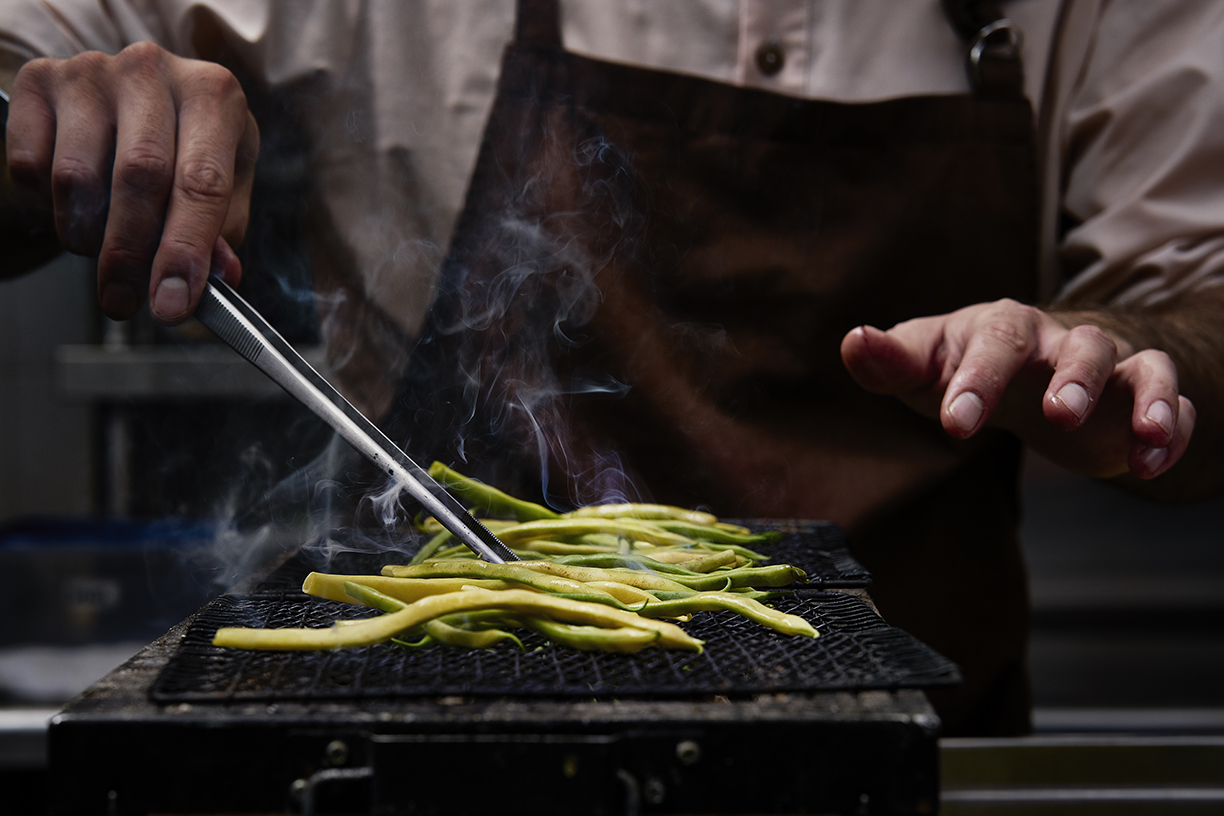
Restaurant Nolla prides itself on using fresh and well-kept ingredients.
Each dish created is carefully crafted to maximize every piece of each ingredient. Parts of an item that can’t be utilized are composted. Restaurant guests witness this process as the composter is located in the main dining area, showcasing what the restaurant is all about. Although utilized, the composter is not used as a garbage can. Before each item is tossed away, it is weighed and analyzed using a waste management software. Data is collected, what was thrown out, who threw it away and why, and is used to help improve the restaurants practices.
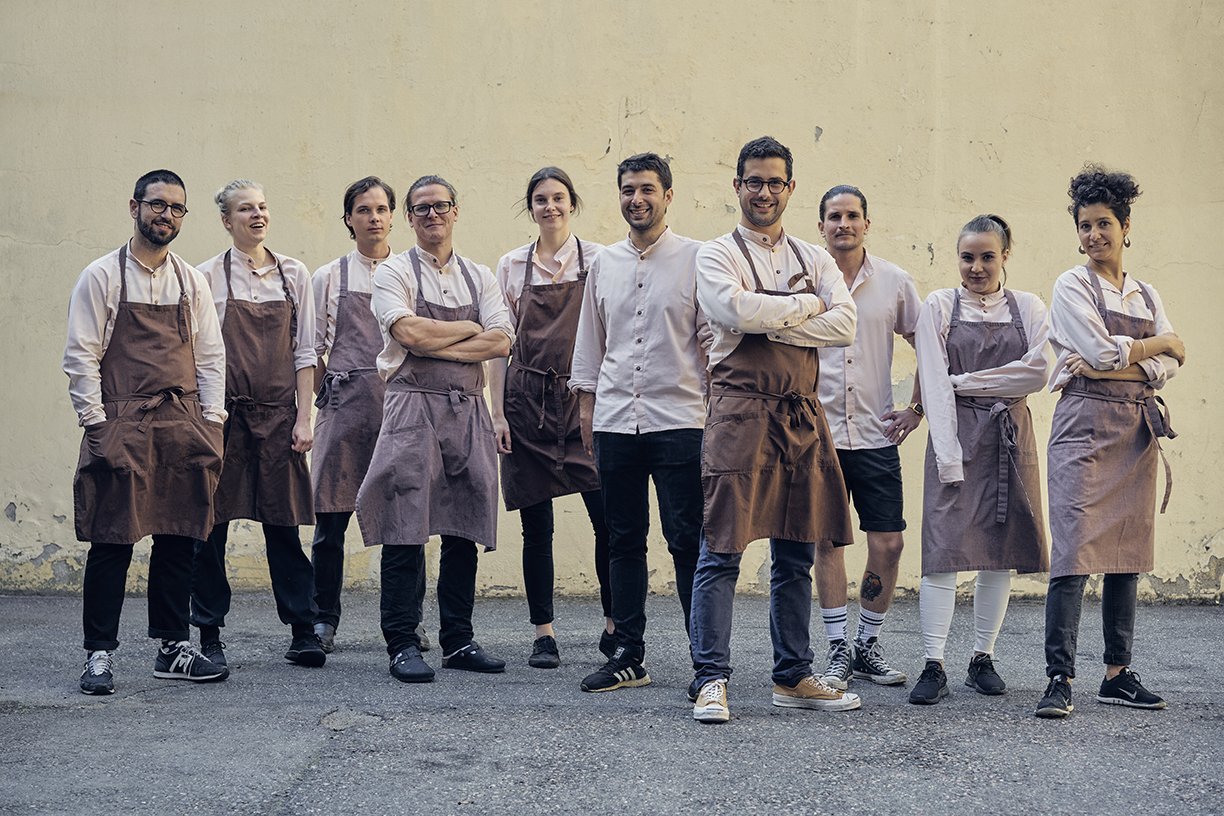
The Restaurant Nolla team.
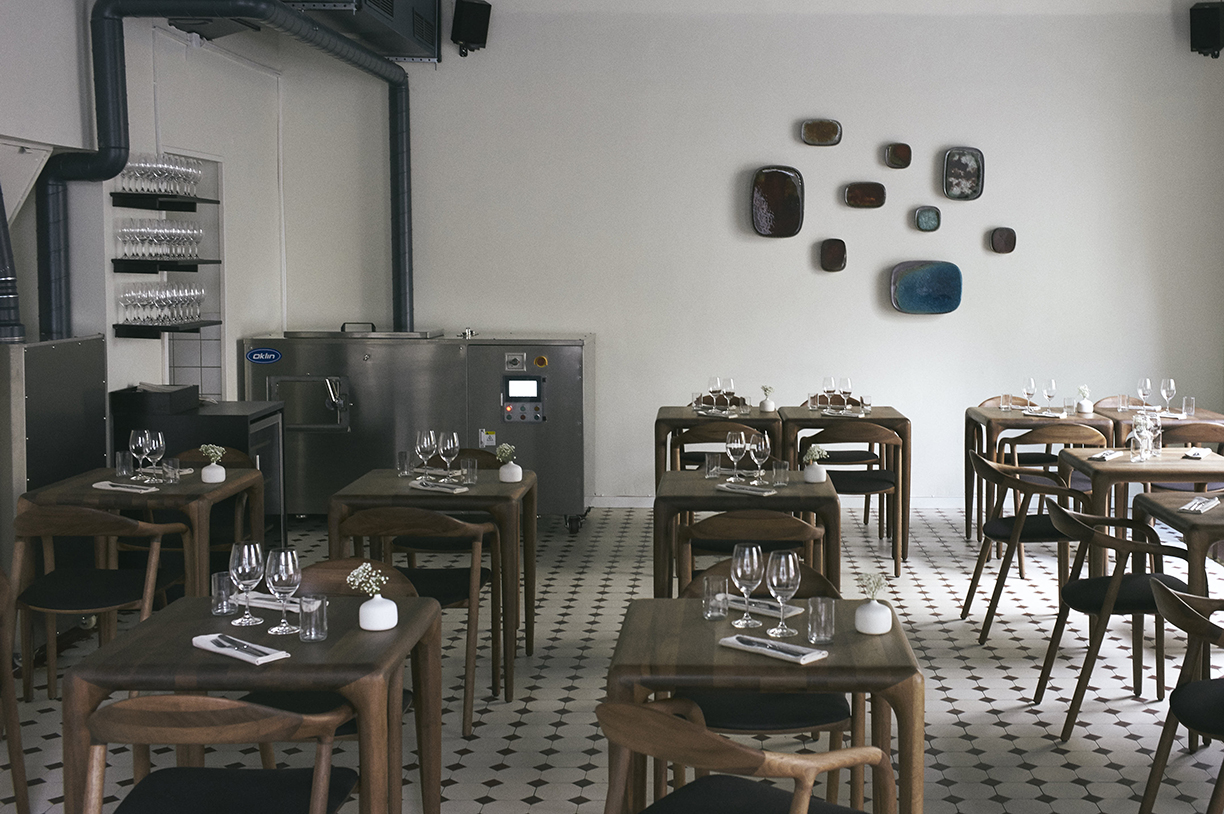
The composter sits in the dining room.
“Nolla is a restaurant without a trash bin. You cannot find any single use plastic here — no plastic packaging, no cling film, no vacuum bags, no foil,” says Sunyar, head chef of Restaurant Nolla, “Every detail from staff clothing and napkins to tableware has been thought of. Even the gift cards are made of compostable paper that has poppy seeds in them.”
Food is handled in a special way to ensure that Restaurant Nolla remains a waste-free establishment. From the way the food is delivered right down to how it’s stored, no part of the process was disregarded.
“We have created a box system for vegetables, fish and meat with local producers,” says Sunyar. “The boxes travel back and forth to prevent any packaging waste. We are very strict with this rule. If something comes in a non-reusable packaging, it is sent back to the supplier. No exceptions. This is the only way to make sure that people understand our beliefs and respect our practices.”
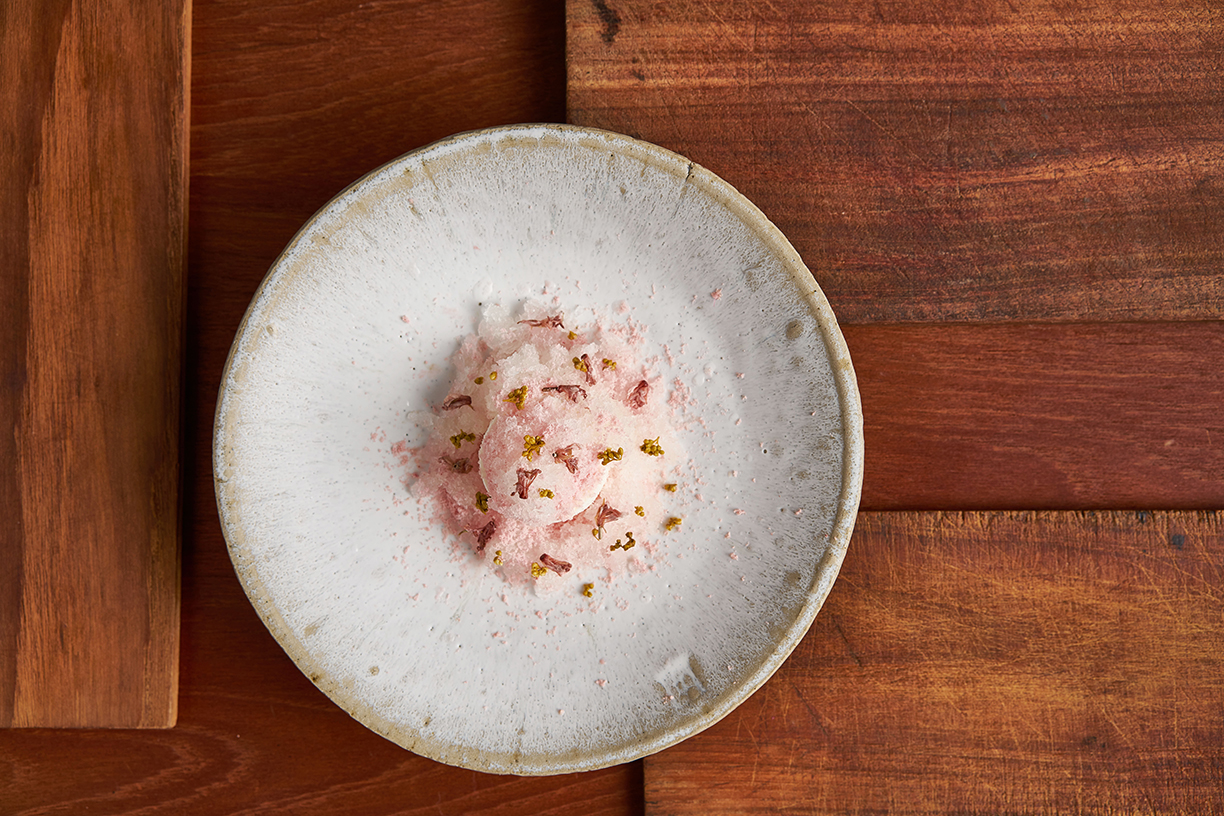
All parts of rhubarb.
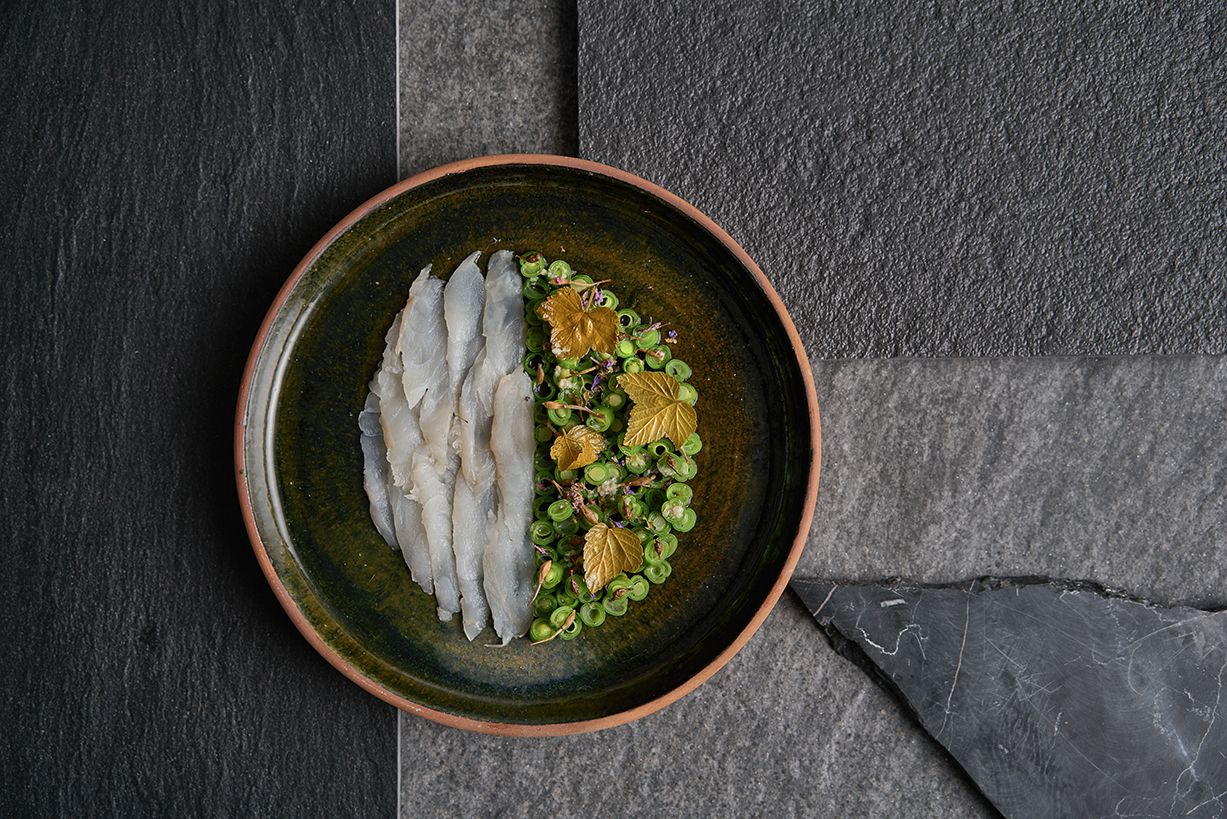
Beans and crudo.
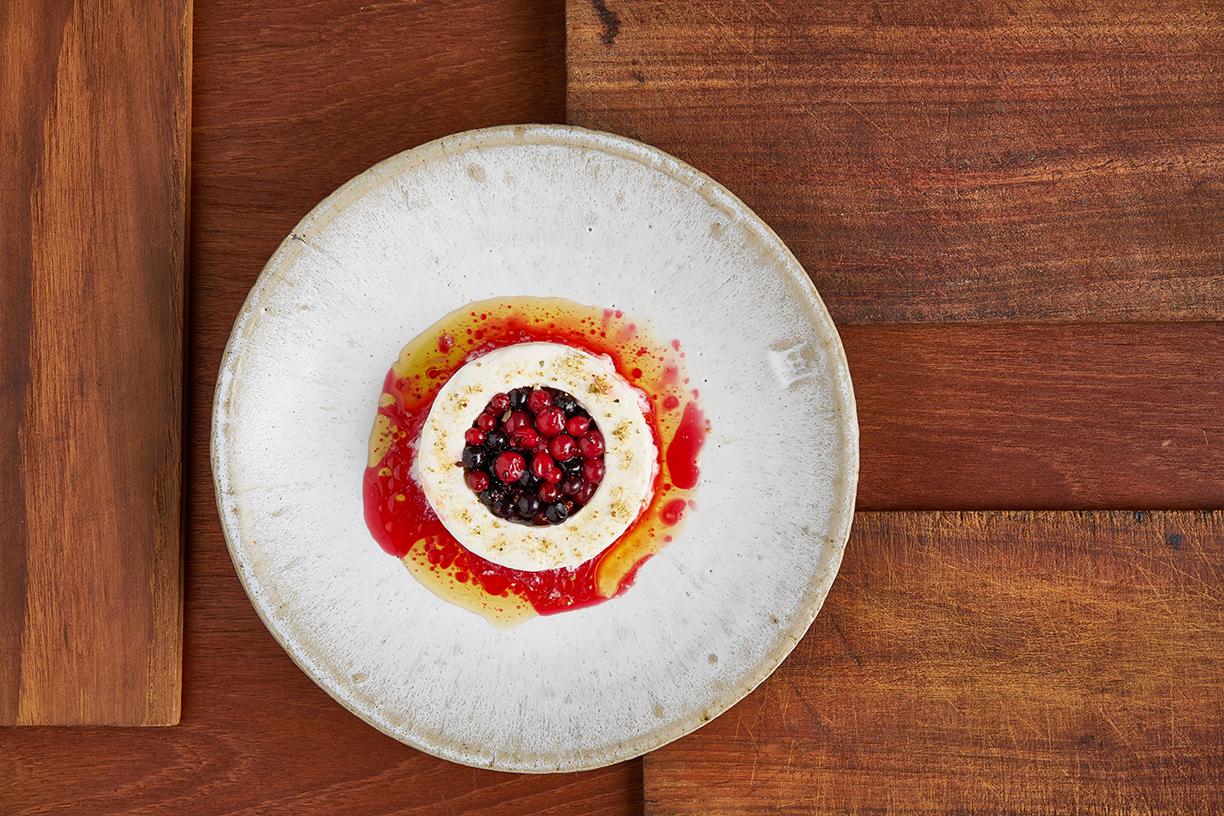
Ice cream, berries and honey.
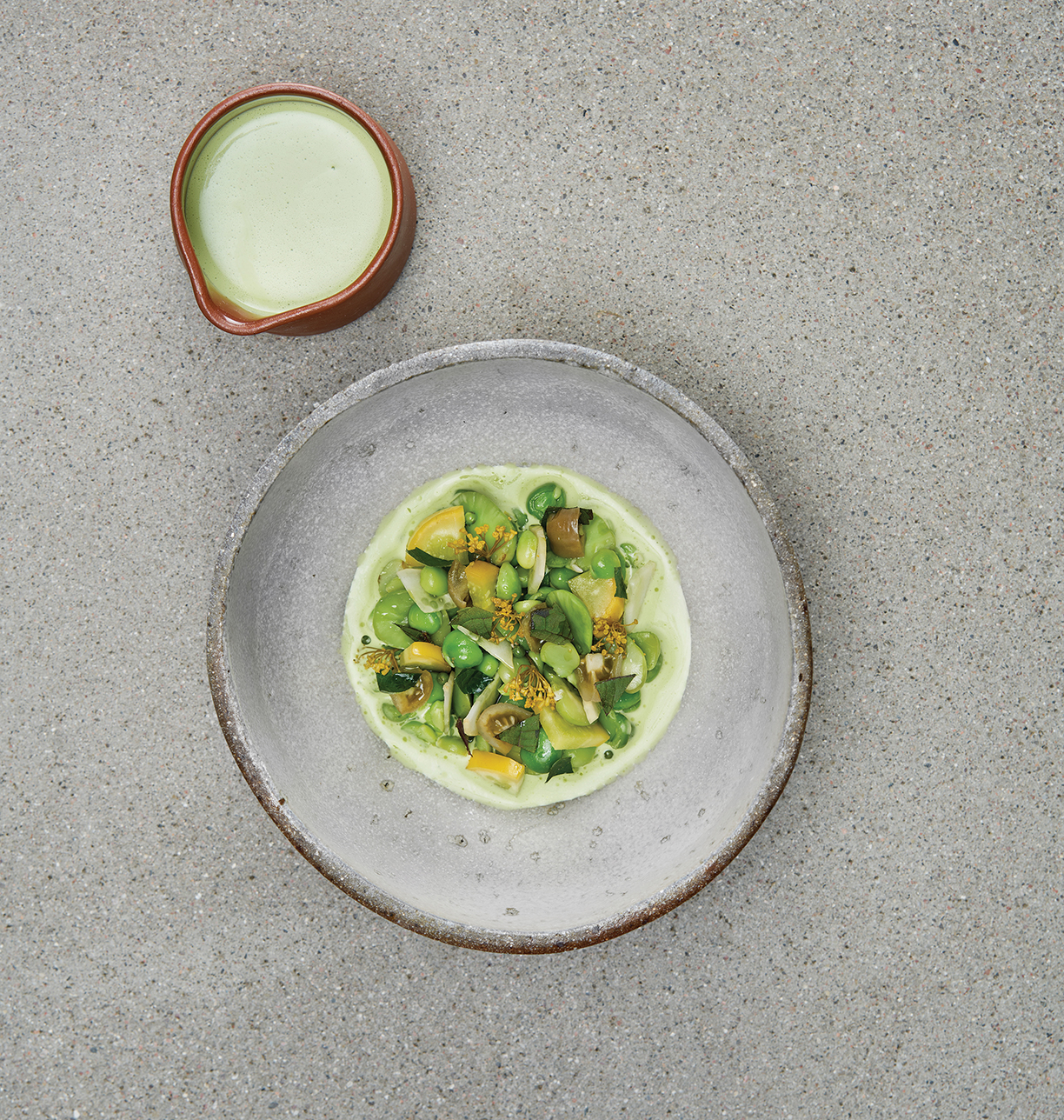
Sturgeon Pil Pil.
Food is fermented, pickled and dried to ensure ingredients are stored properly. The restaurant works with local producers who help them determine the best ingredients to use, based on what is growing during peak season.
“We use local and organic products,” says Sunyar. “The ingredients and their natural characteristics are the backbone of our tasting menus, and therefore, it is imperative that the quality of the produce is very high. These products tend to be more expensive in general, however, by using seasonal products and utilizing every part of them, our way of operating is very much cost effective.”
The chefs set out to show people that what they have accomplished is profitable and manageable. According to Sunyar, it’s not an easy process and creating the menu does take some time, but in the end he and the team stand by what they do, and they execute delicious and visibly beautiful dishes.
“It is a common misconception that waste-free practices mean cooking from products that expire soon or that making sustainable choices means that the quality deteriorates,” says Sunyar. “We do not cook from waste nor do we produce waste. We want to show that creative and great food can go hand in hand with sustainability.”
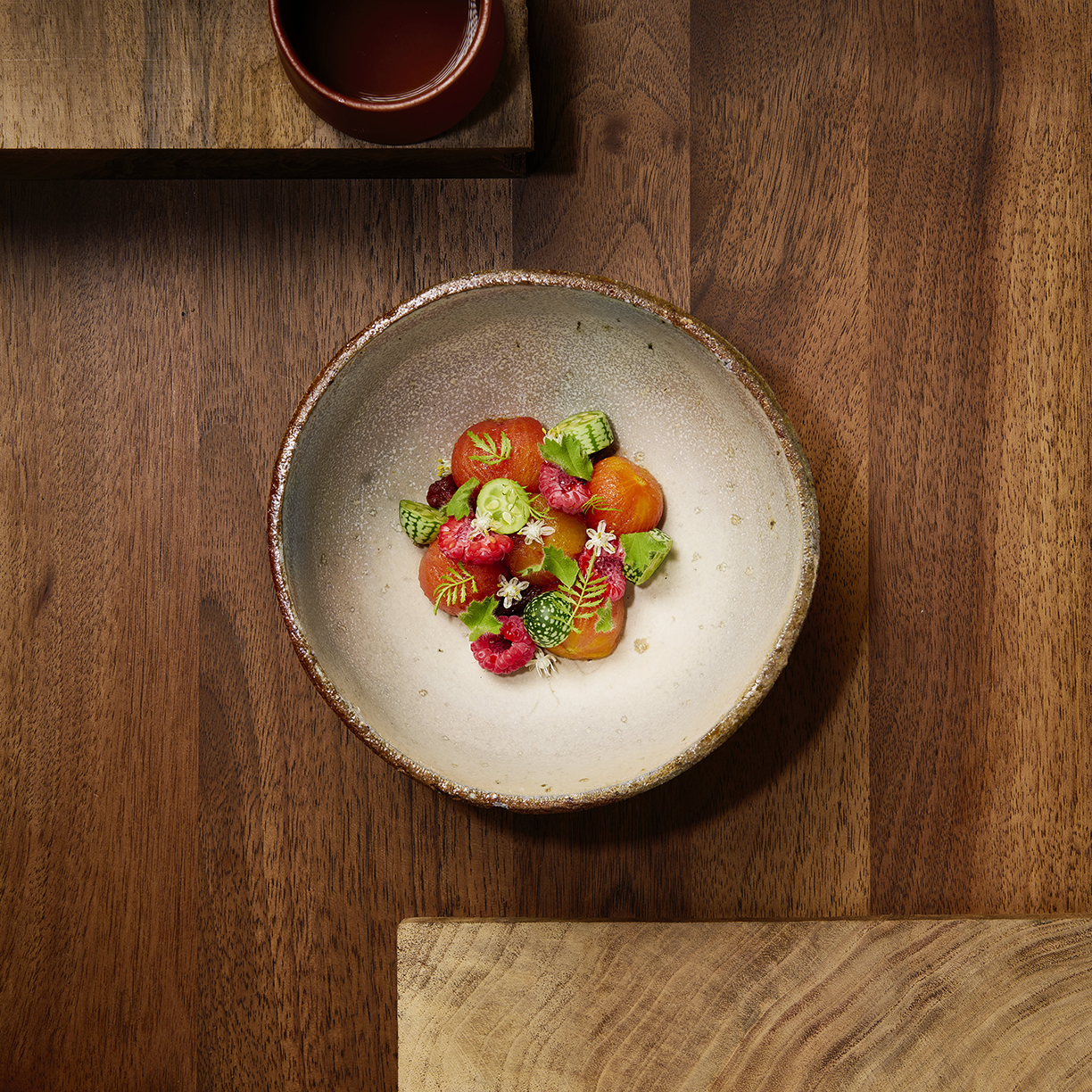
Tomatoes, raspberry and chili.
All photos and feature photo courtesy of Nikola Tomevski.
Leading experience agency GR8 hosts the second annual, once-in-a-lifetime culinary experience “Once Upon A Kitchen,” featuring unique creations from the world’s top chefs.
For the first time ever, four culinary masters — Massimo Bottura, Joan Roca, Mauro Colagreco, and Christina Tosi — came together under one roof to curate an exceptional multi-course dinner. Often inspired by the world’s artwork, people and history, each chef showcased original culinary creations on the evening of December 5, at New York City’s Gotham Hall. Unique Homes was honored to attend.
Whether it was the beetroot cooked in salt crust, spin-painted veal, or deconstructed apple pie, those who attended this exclusive gastronomic experience savored inspired dishes while indulging in exclusive wine.
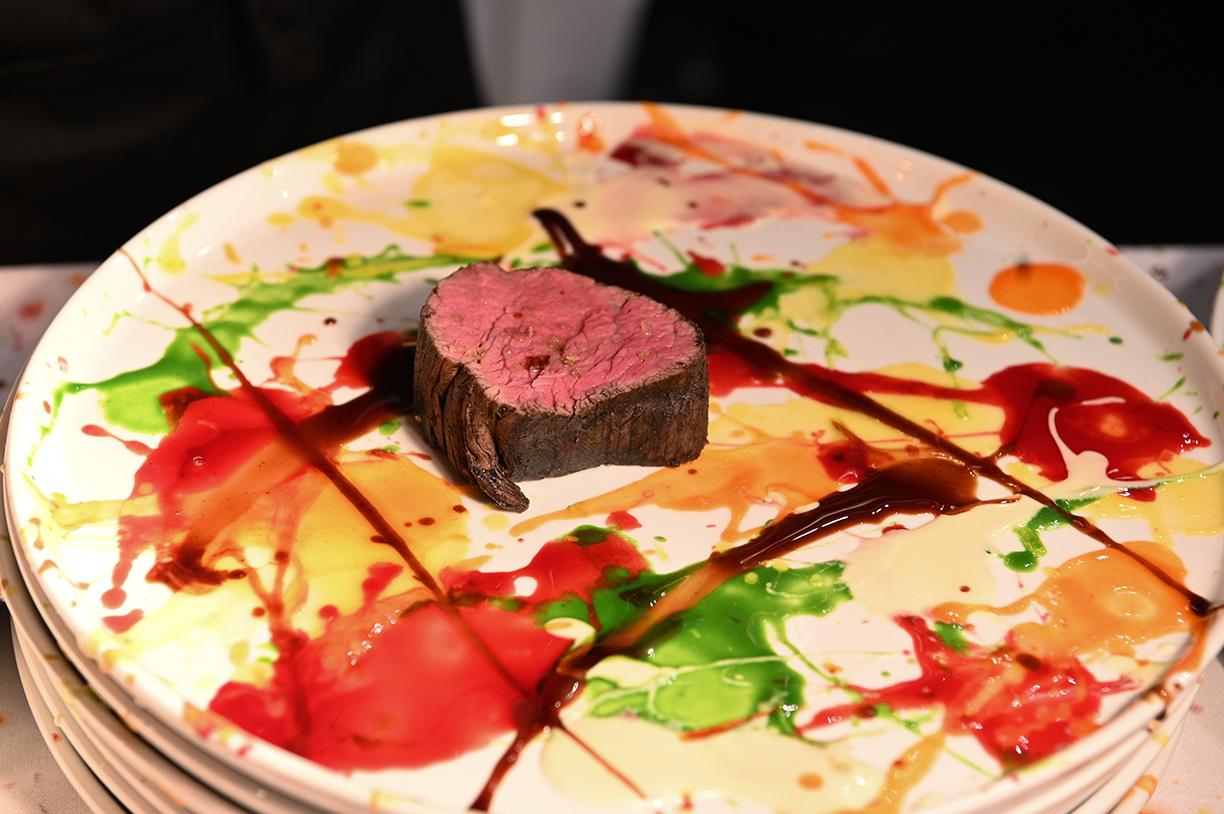
“Psychedelic Spin-Painted Veil” by Massimo Bottura
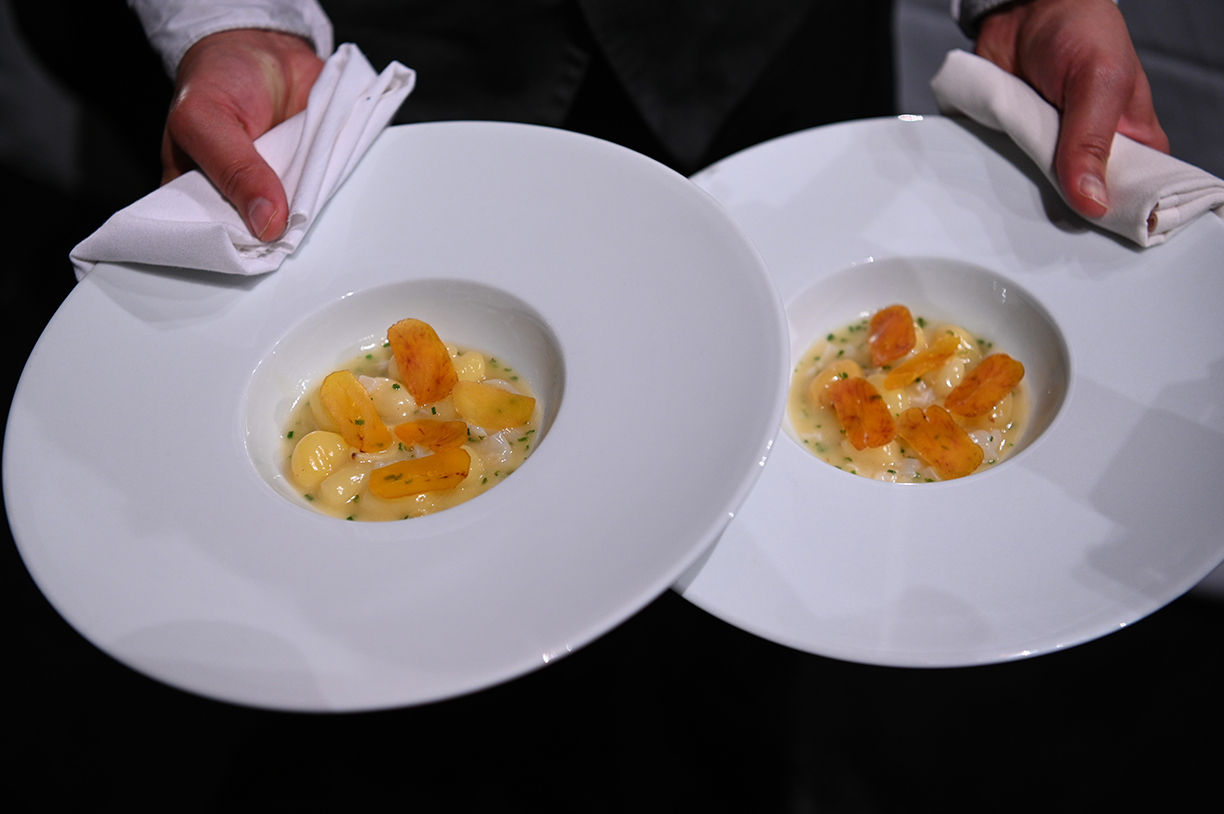
Ragout of Baby Potatoes.
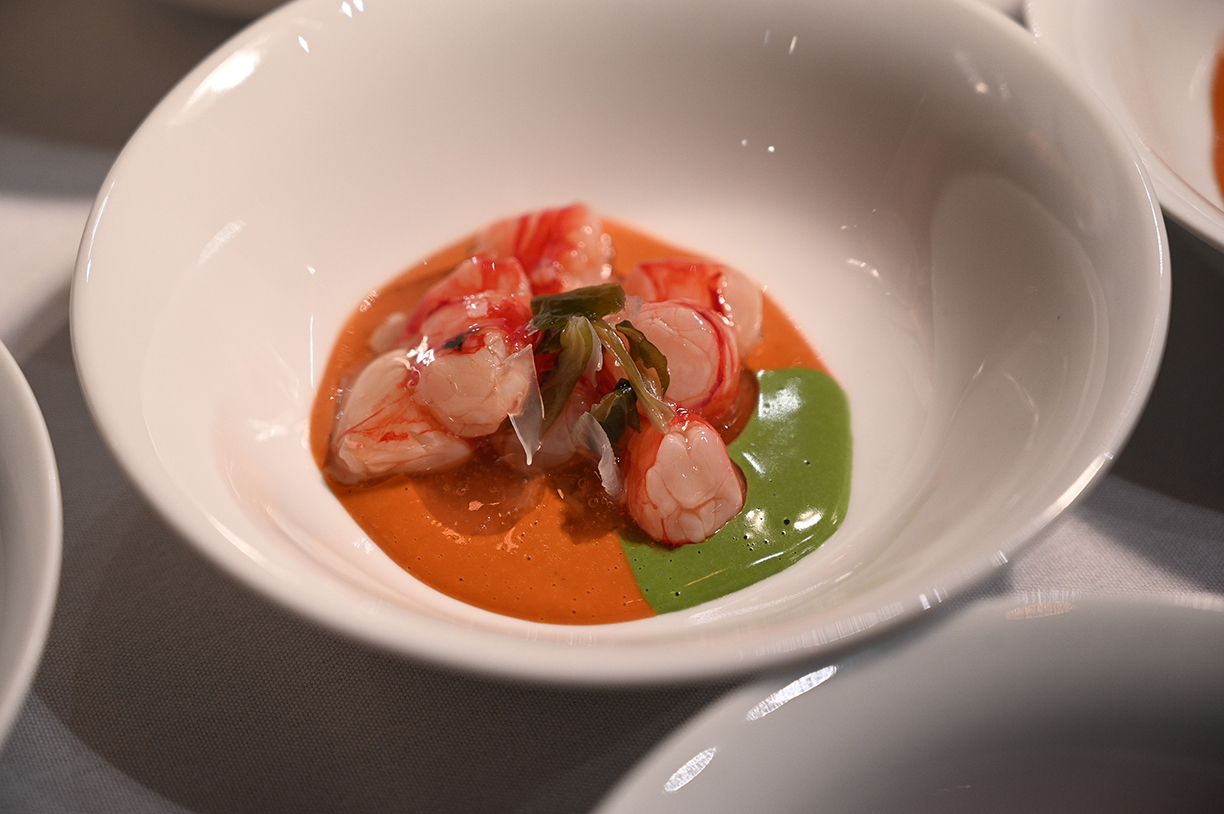
Prawn Marinated with Rice Vinegar
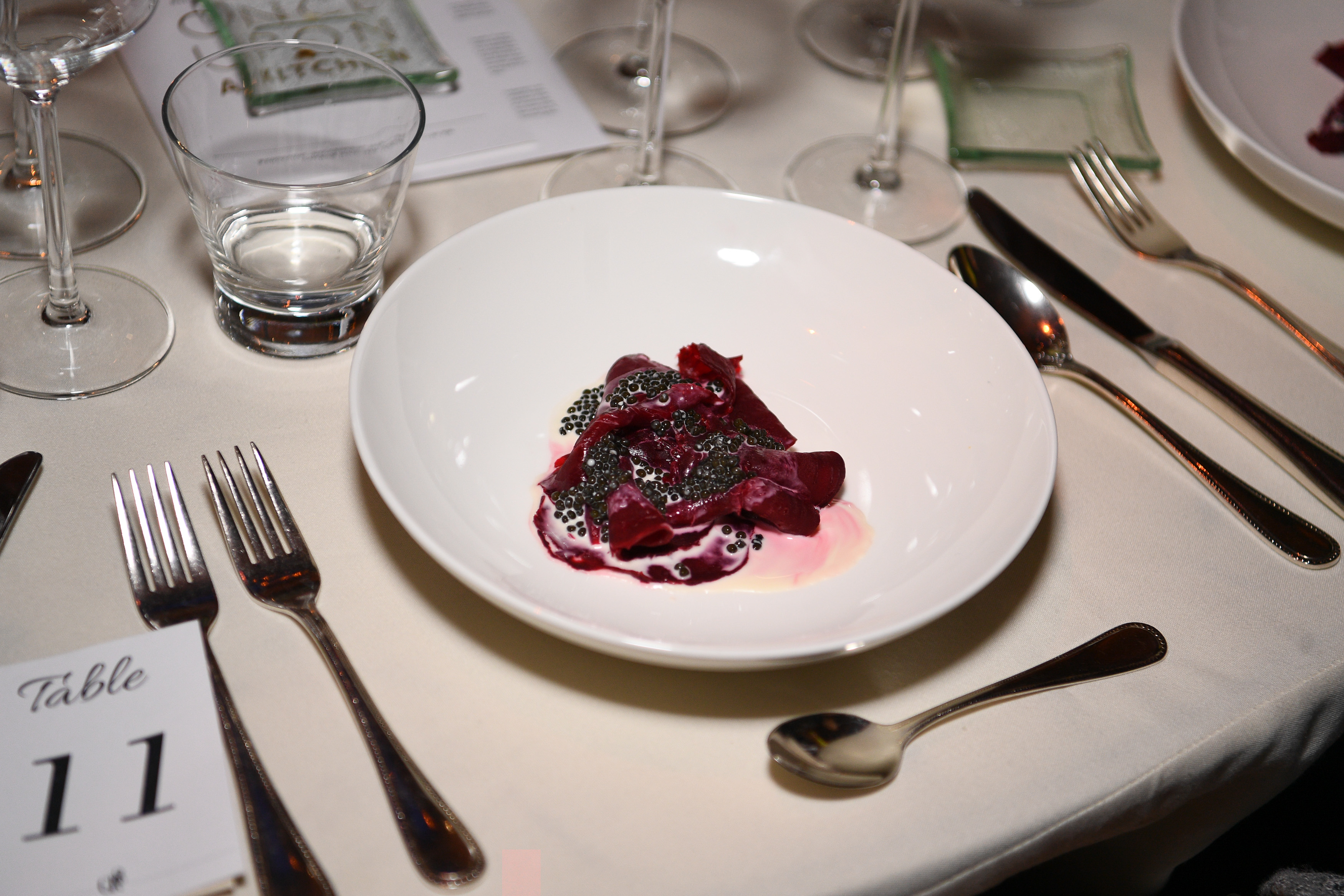
Beetroot Cooked in Salt Crust

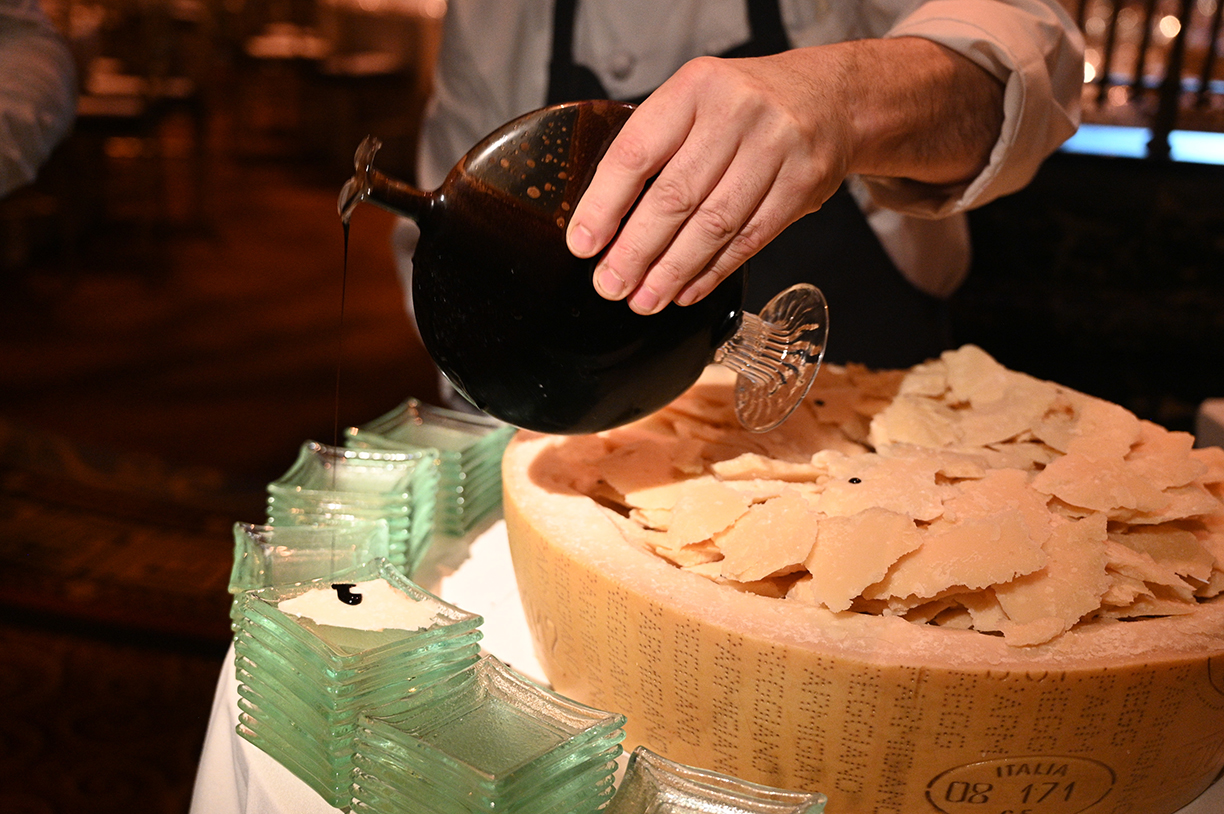
The evening commenced with the Eureka Experience, a private wine tasting with world-renowned winemaker Roberto Cipresso. Attendees were presented with two exquisite wines coinciding with stories from two iconic regions of Italy, Tuscany and Lazio.
Guests were then welcomed to a cocktail reception, which highlighted three unique wines and one signature cocktail paired with hors d’oeuvre creations from each chef.
Massimo Bottura presented a 30-month selection of Parmigiano Reggiano with extra aged balsamic vinegar, along with Mauro Colagreco’s Jerusalem artichoke tartelettes with black trumpets and melanosporum truffle and Joan Roca’s Steamed Truffle Brioche.
Following the hors d’oeuvres, attendees were seated and addressed by CEO of GR8, Barnabas Carrega, and award-winning creator and host of The Sporkful podcast, Dan Pashman.
Pashman was the official host of the evening, presenting the chefs and each of their exclusive dishes. Serenaded by an accompanying pianist, guests watched as the chefs prepared, cooked and plated seven courses in total — each accompanied by a hand-selected wine.
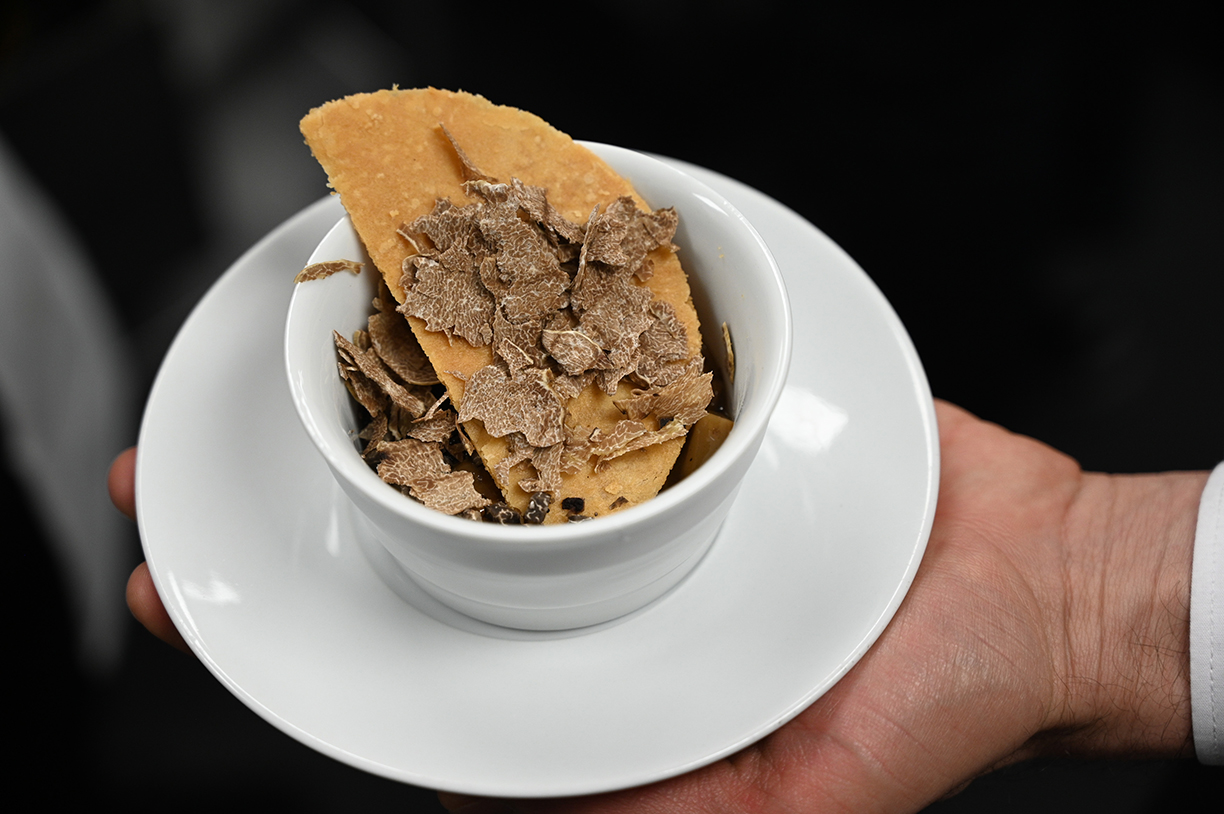
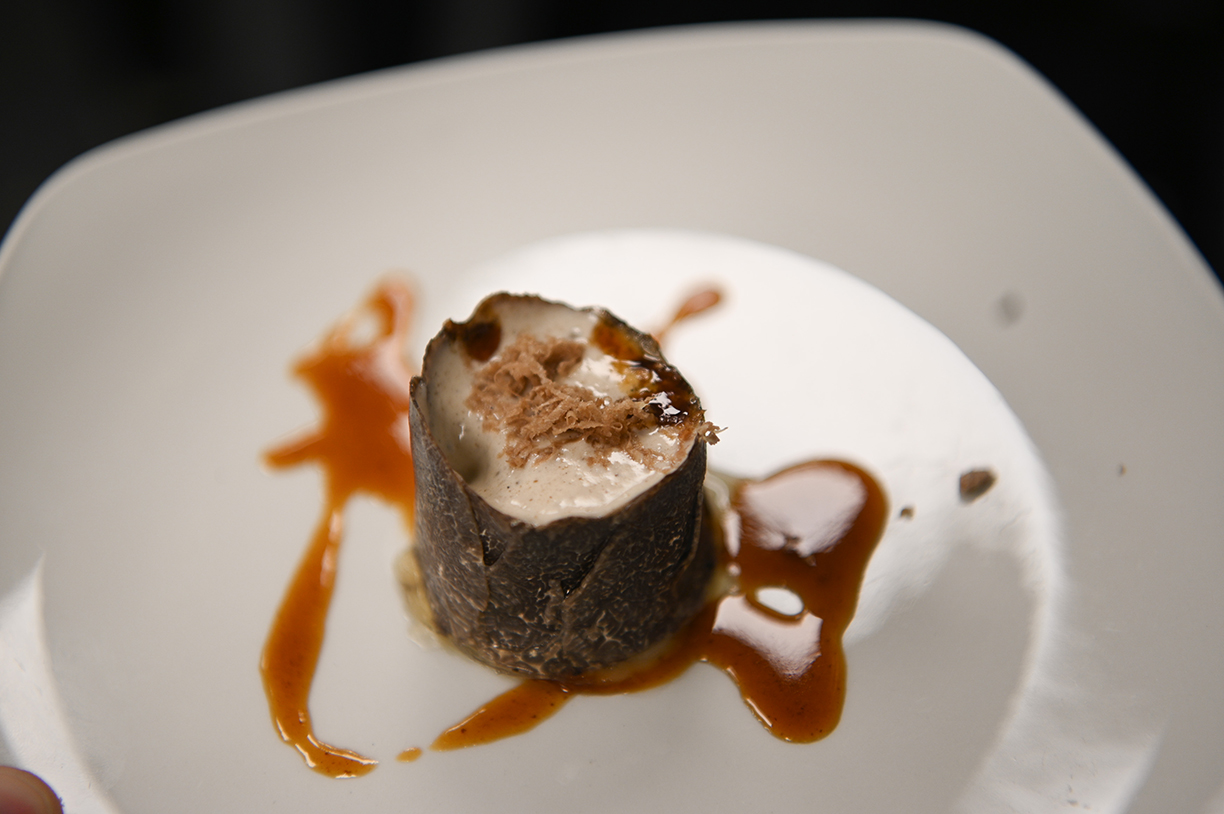
Left: “Never Stop Planting” by Massimo Bottura
Above: Truffle Soufflé with Veal Oyster Blade by Joan Roca
Some culinary highlights of the evening came from Osteria Francescana’s Massimo Bottura who presented a “Never Stop Planting” dish paying tribute to Joseph Beuys’ infamous installation planting oak trees and granite columns throughout far reaching locations.
The dish was a foie gras custard served with seasonal woodland flavors from truffles to mushrooms in a mineral broth. Bottura also presented guests with “Psychedelic Spin-Painted Veil.” The meat was marinated in milk, brushed with vegetable charcoal and dressed with creamy potatoes, puree of orange and yellow peppers, a red beet reduction and extra old Villa Manodori Artigianale balsamic vinegar from Modena.
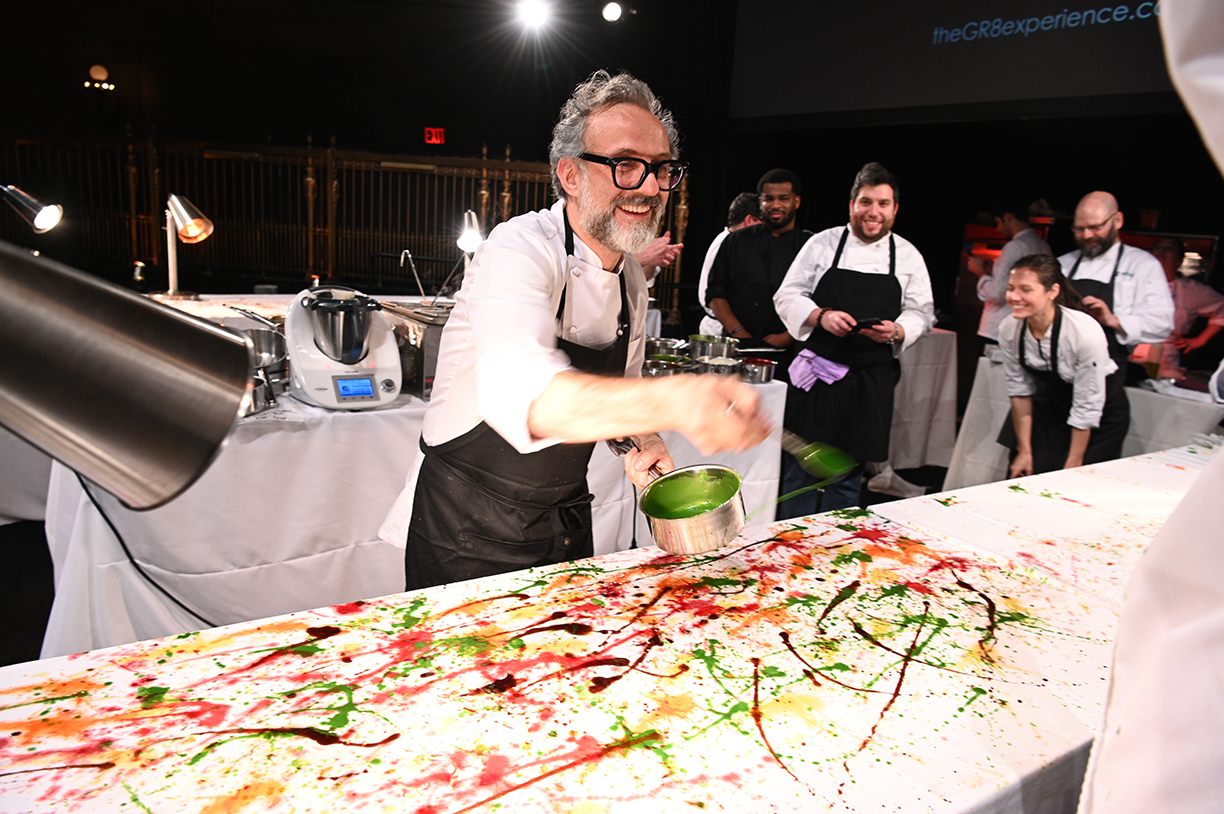
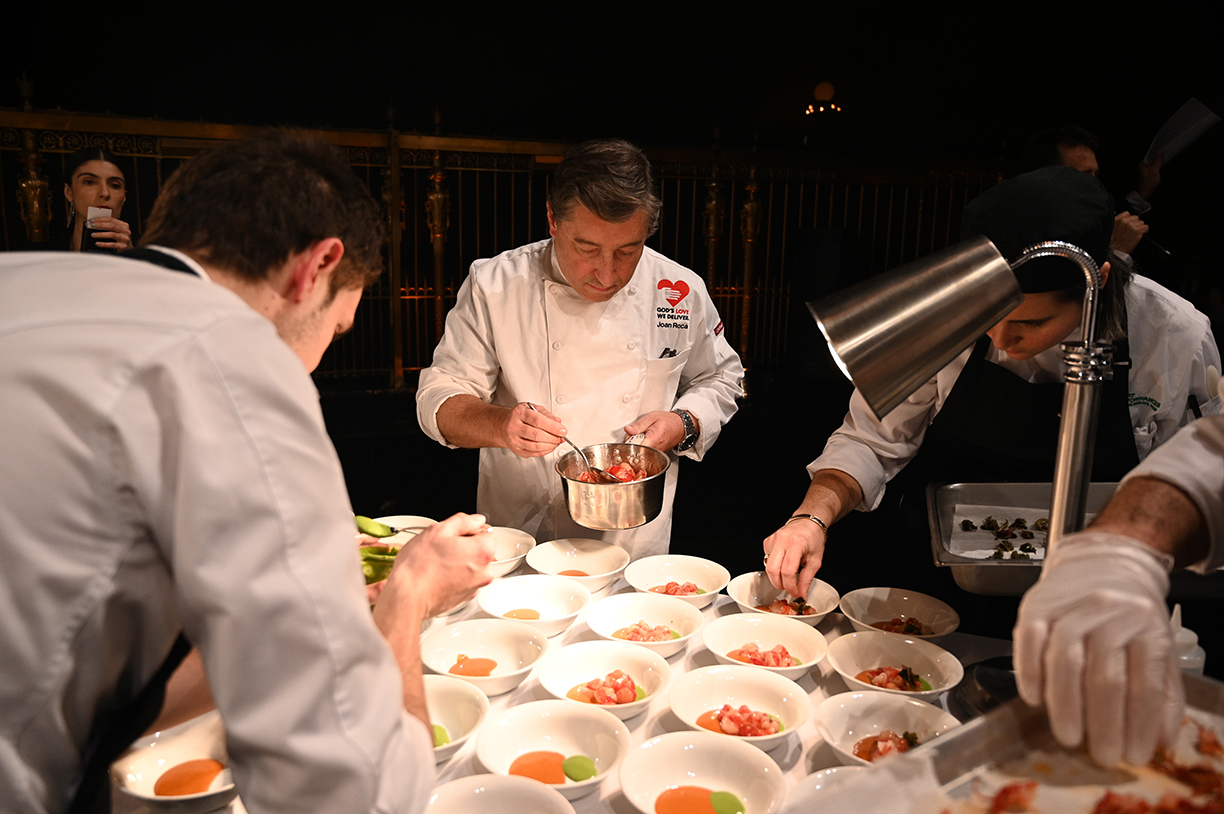
Joan Roca’s exquisite cuisine featured prawn marinated with rice vinegar, drawing inspiration from Salvador Dalí’s “The Persistence of Memory.” Roca also presented a truffle soufflé with veal oyster blade inspired by Gaudi’s modernist architecture and the “Melting Watches” of Dalí’s famous painting, “The Persistence of Time.”

Mauro Colagreco showcased his undeniable talents through a “Crapaudine” Beetroot cooked in salt crust, finished with a “Ossetra” Caviar Sauce inspired by the agricultural knowledge of producer, Annie Bertin from the small town, Vende, in northwestern France.

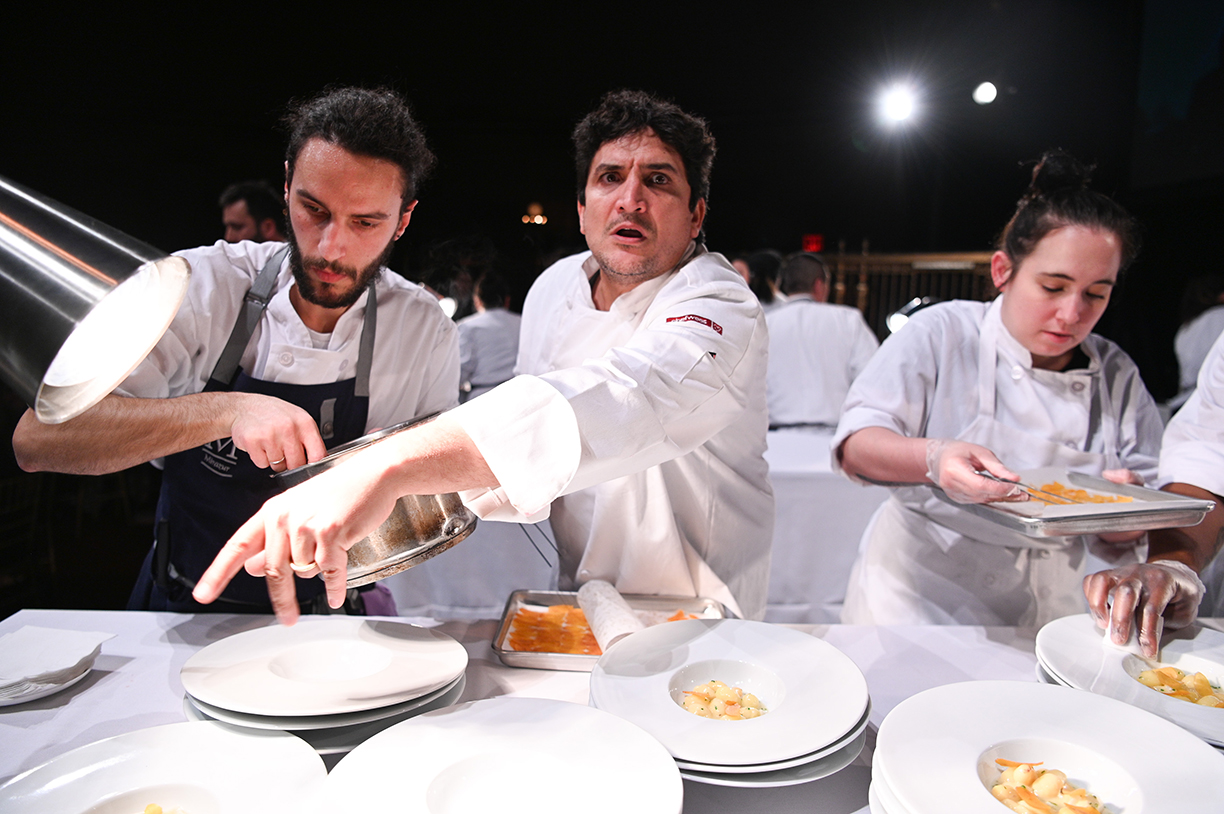
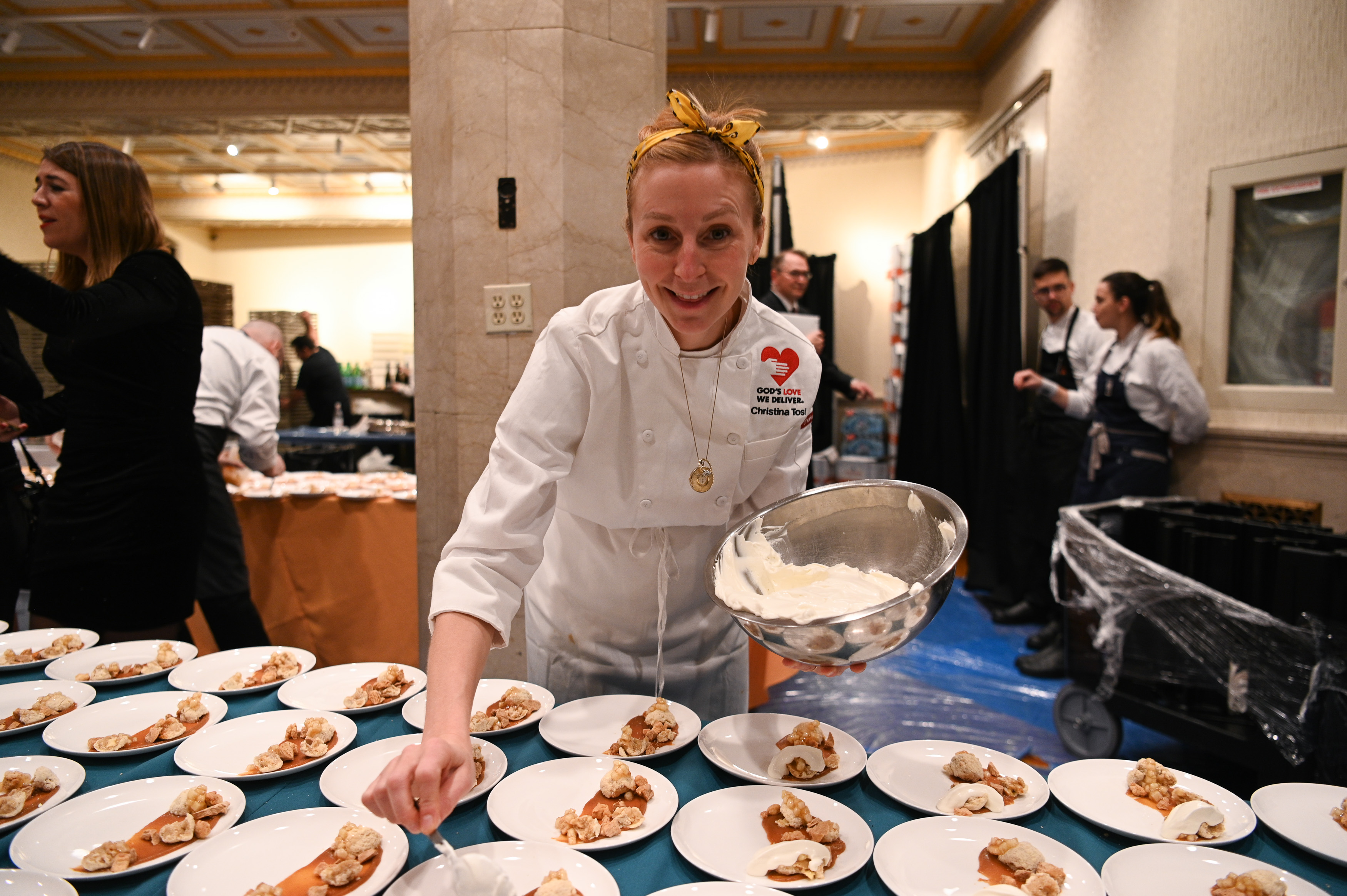
Guests were then treated by the creative mastermind and classically trained pastry chef Christina Tosi, founder and CEO of Milk Bar, whom presented an exclusive “Apple Pie-ish” dessert topped with a miso butterscotch, brown butter and sour whipped cream.
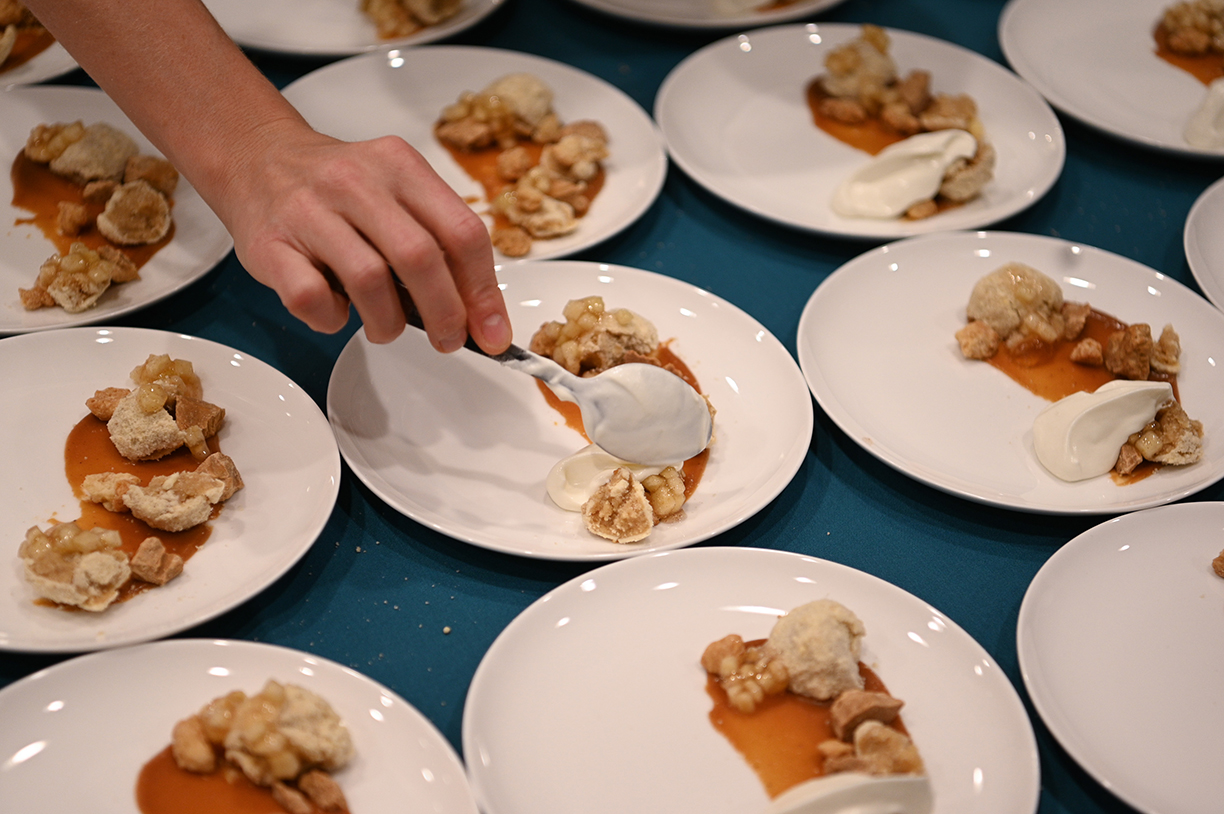
Following the gastronomic cuisine, all four chefs came to the stage for a final conversation with Dan Pashman discussing their dishes from the evening and the inspirations that created them.
The evening’s beneficiary was God’s Love We Deliver, the leading provider of nutritious and personalized meals to individuals who are too ill to shop and cook for themselves. God’s Love We Deliver creates and provides over 7,000 meals each weekday, delivering them to those with life-altering illnesses across all five New York City boroughs, Westchester and Nassau Counties, and Hudson County, New Jersey.
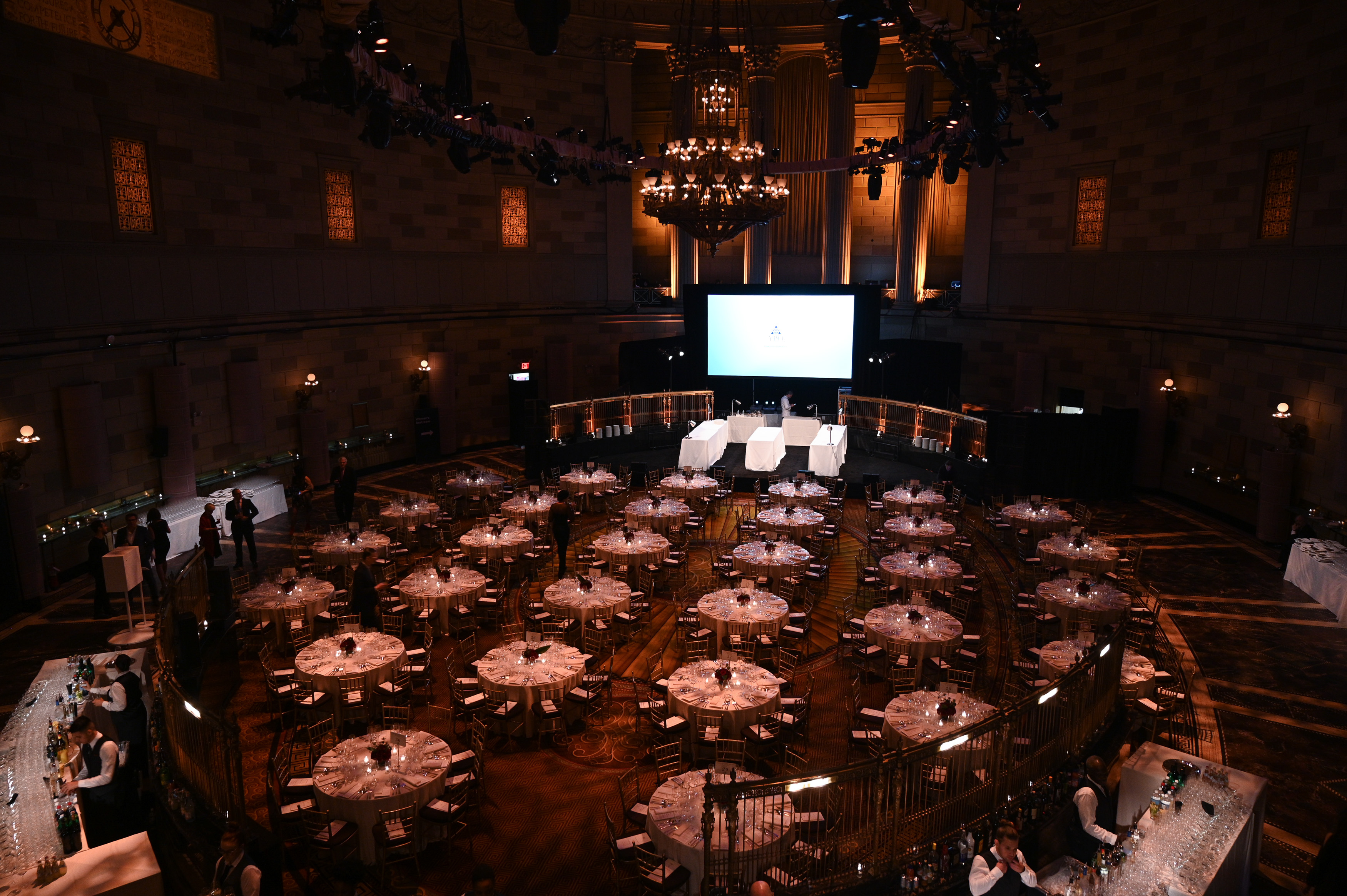
American chefs appreciate French tradition, but are increasingly inspired by ethnic communities in their own backyards.
By Roger Grody
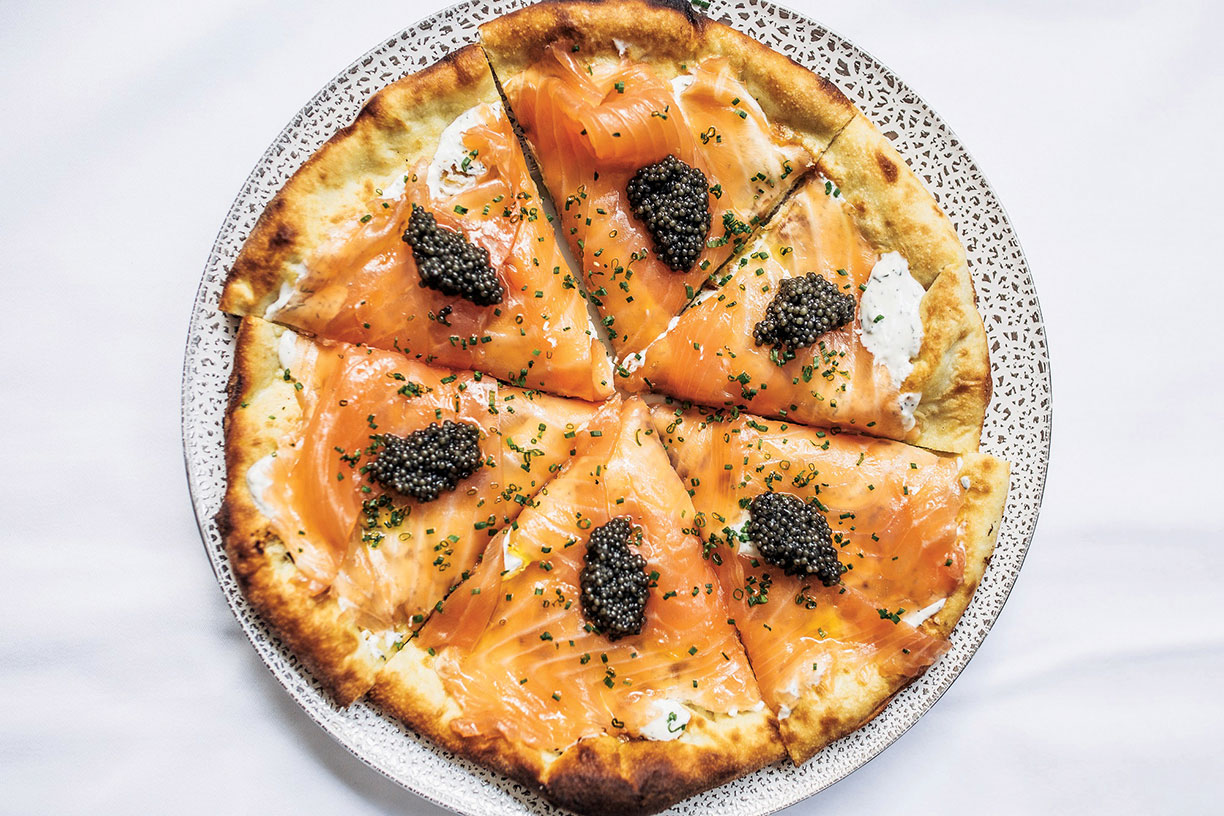
Photo courtesy Antonio Diaz
There was a time when young chefs in America were primarily influenced by French masters like Paul Bocuse or Joël Robuchon. While classic technique remains important, eclectic global flavors have become equally influential. Conveniently, chefs no longer need to travel the world to discover exotic fare, because it is simmering in the diverse ethnic neighborhoods of most American cities.
The practice of incorporating ethnic elements into familiar dishes used to be referred to as “fusion,” a term that has fallen out of favor with contemporary chefs, and today’s cross-cultural combinations are more nuanced and less frivolous than in the 1980s. Today, chefs tend to use local ethnic cuisines as accents or pay tribute to their own families’ immigrant roots. The presence of Middle Eastern falafel on a French menu or a dusting of Japanese togarashi seasoning on potatoes at an all-American steakhouse does not compromise the integrity of their respective cuisines, but certainly makes them more interesting.
A master of infusing local ethnic flavors into his dishes is celebrity chef José Andrés, who borrows Latin American and Asian elements at The Bazaar by José Andrés in Los Angeles. In multicultural Miami, he incorporates Caribbean elements into his menu at The Bazaar South Beach. Given his own Spanish heritage, incredible versatility and expertise with complex molecular gastronomy techniques, most Andrés menus feature some unusual culinary mashups.
At South Beach, Andrés honors the local Cuban community with colada Cubana, a play on Cuban coffee turbocharged with foie gras, and pollo al ajillo (garlic chicken) slow-cooked with black garlic. As a tribute to South Florida’s Jewish community — largely comprised of transplanted New Yorkers — the chef offers a clever riff on bagels and lox: dill cream cheese-filled bagel cones topped with salmon roe. And for dessert, Andrés playfully deconstructs another local specialty, Key lime pie.
Bazaar South Beach chef de cuisine Tito Vargas, a native of Puerto Rico, says he and Andrés draw inspiration from a wide variety of Latin American and Caribbean cultures. “It’s important that I keep true to José’s vision, showcasing the main ingredient and transforming it without sacrificing the flavor and integrity of the product,” he says. Vargas notes that even when applying high-tech culinary tricks, the essence of a dish is respected and preserved. “In no way, shape or form does it look like a Cuban sandwich, but when you bite into it you get all the flavors that compose a Cuban sandwich in a more fun, inventive way,” says the chef of The Bazaar’s molecular gastronomic version.
Despite Los Angeles’ reputation as a bland, immense swath of suburbia, its location — on both the Pacific Rim and threshold to Latin America — ensures diverse ethnic communities that constantly fuel the imagination of local chefs. In L.A., where California Cuisine has morphed into a more global fare, crossing culinary borders is almost routine. At Wolfgang Puck’s celebrity-favored Spago in Beverly Hills, for instance, the menu includes elements from nearly a dozen cuisines.
Bryant Ng was trained in classic French cuisine — he cooked with celebrated chef Daniel Boulud in New York — but at his own restaurant, Cassia in Santa Monica, California, he cooks French brasserie fare with an ethnic twist. At first glance, Cassia’s menu looks like it was borrowed from a Parisian brasserie, but the young chef tweaks traditional dishes with accents from his father’s Singaporean roots and his wife’s Vietnamese heritage.
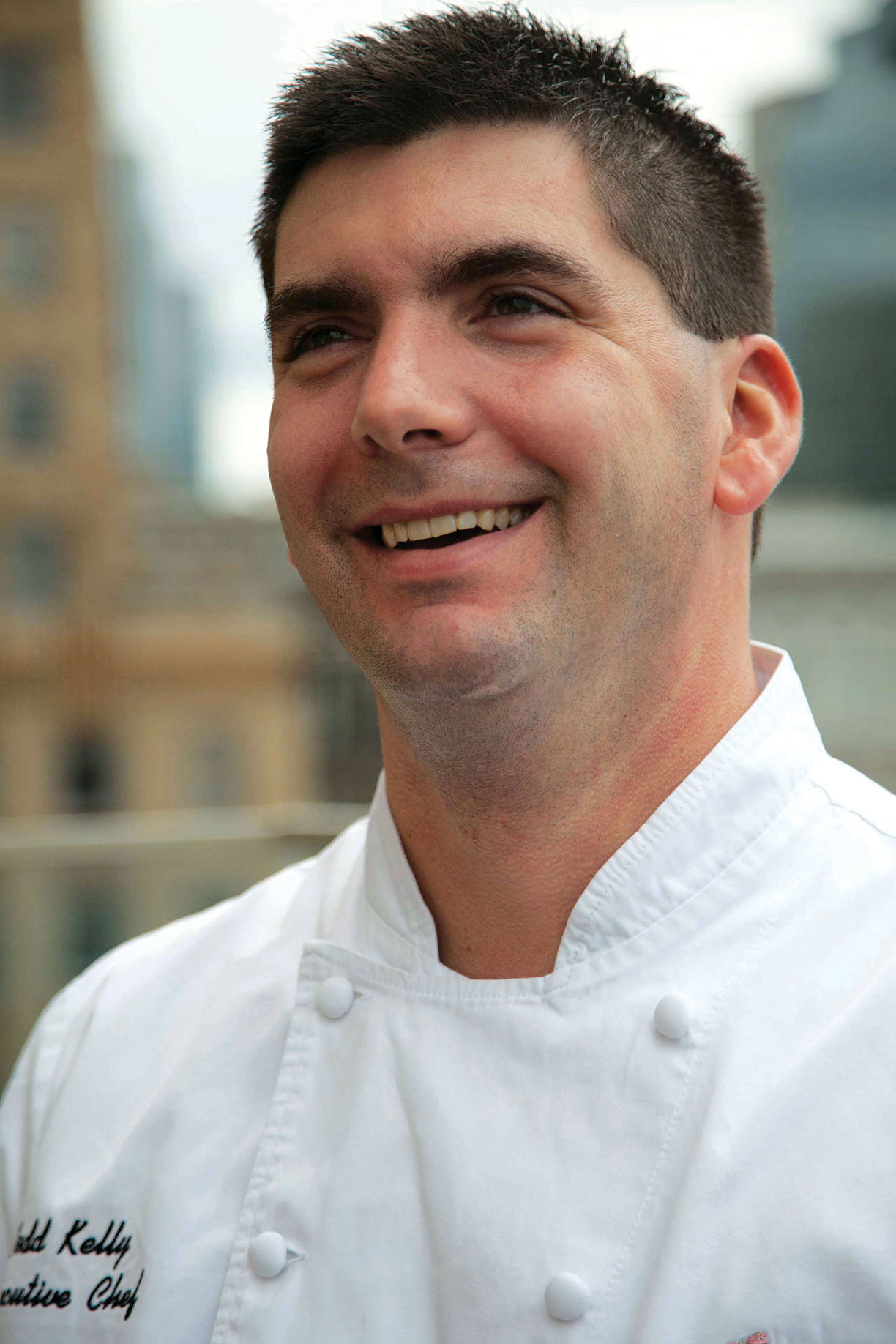
Todd Kelly
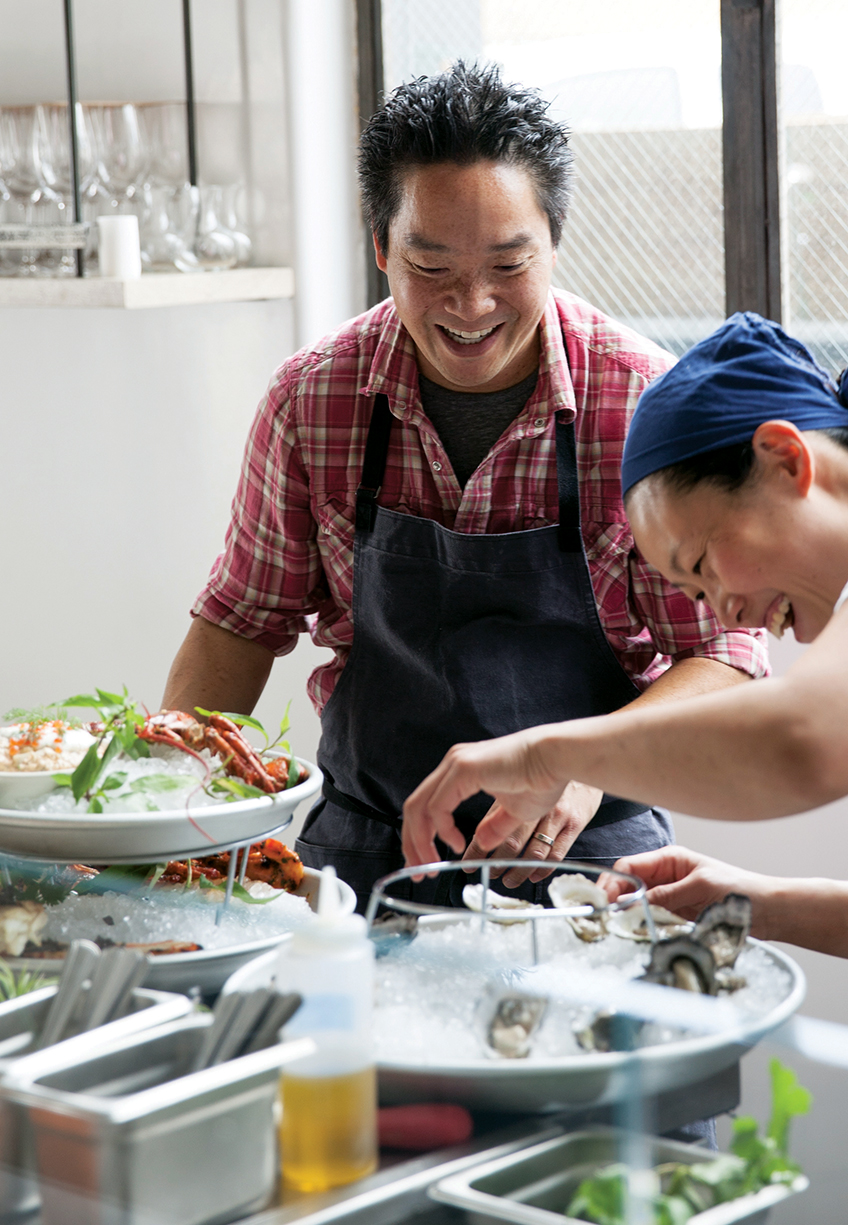
Bryant Nig
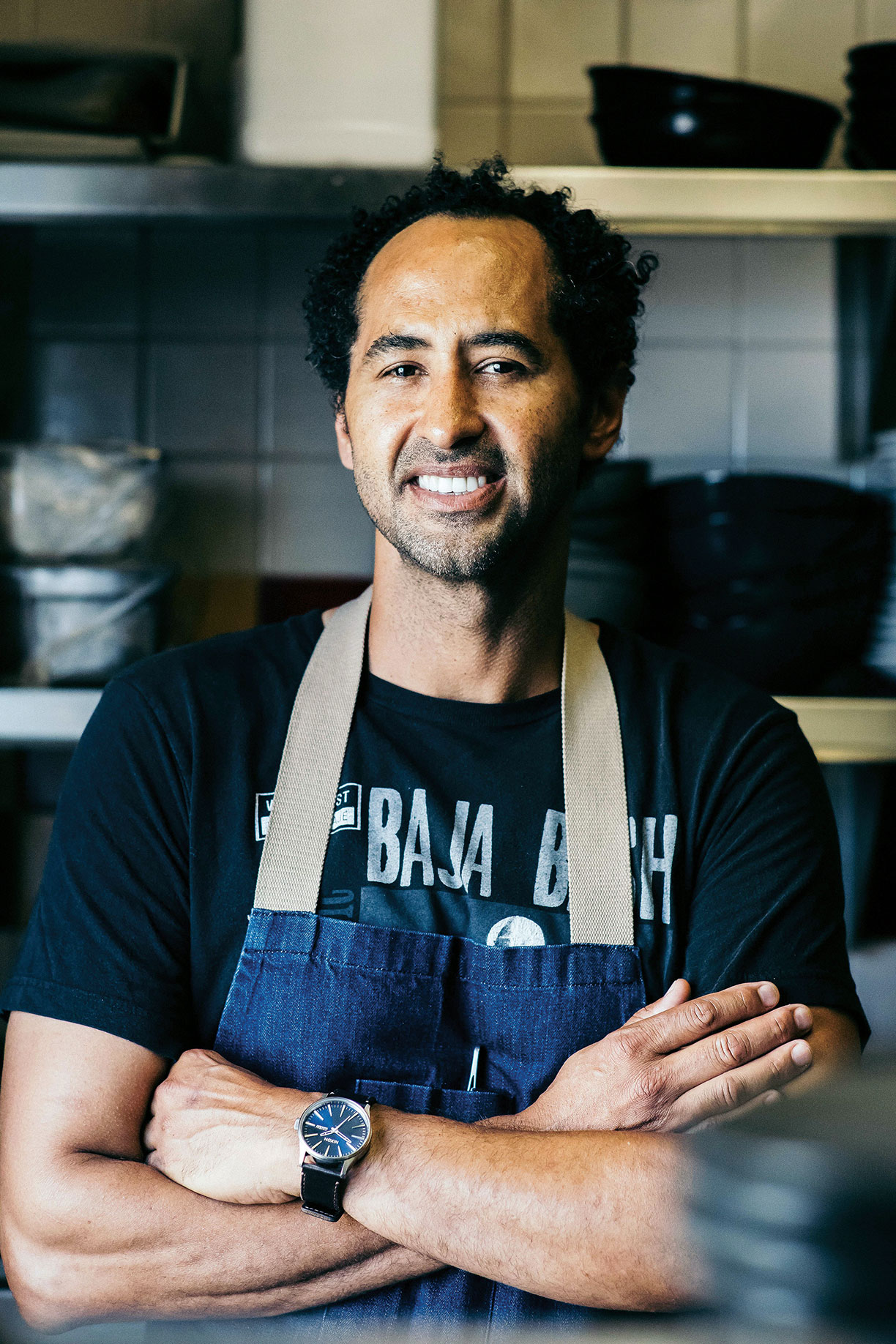
Jason Nibb
Ng’s charcuterie platter includes items like Singaporean candied pork and Vietnamese meatloaf, while escargots are scented with lemongrass. Cassia’s take on the French comfort dish of pot-au-feu has a pho-inspired broth and the bistro staple of steak frites is bathed in a Phú Quôc Island peppercorn sauce. Kaya toast, a signature of Singapore’s street vendors, is not likely to be found in a 14th arrondissement brasserie, but is a specialty at Cassia.
“It’s a very personal menu because it combines the food of my heritage, but also has influences from my professional experiences,” explains Ng. “Understanding the ‘soul’ of a cuisine is the greatest challenge,” says the chef, who dismisses the practice of simply adding a single indigenous ingredient. “Trying to incorporate multiple culinary influences requires a lot of self-editing and discipline,” adds Ng, who believes any composition must respect the referenced cultures.
Anita Lo is one of New York’s most honored chefs and her restaurant Annisa is a reflection of the diverse influences inherent in contemporary American cuisine. A second-generation Chinese-American, Lo’s passion for food can be traced to Paris, where she first fell in love with the art of cooking. She polished her skills in revered French kitchens and classic technique has always been essential to her approach.
At her Manhattan restaurant, those French sensibilities are applied to some ingredients from her own family’s heritage, as well as other global influences discovered in New York’s rich patchwork of ethnic neighborhoods. Since Annisa’s opening in 2000, Chinese dumplings filled with foie gras mousse and jicama have been one of Lo’s signature dishes. A Chinese-French mashup way too cool to be called “fusion,” the dumplings are topped with seared foie gras and a beguiling black vinegar reduction.
At Orchids at Palm Court, an opulent dining room in the Art Deco Hilton Cincinnati Netherland Plaza, executive chef Todd Kelly is contributing to getting the food scene of the Midwest — a region often neglected outside of Chicago — noticed. As a boy, the native New Yorker lived in Mauritius, an island in the Indian Ocean near Madagascar, and that experience, as well as the chef’s naturally curious palate, results in a menu with eclectic influences.
Kelly’s cuisine, built on a solid classical foundation, is laced with intriguing ingredients like Buddha’s hand, lemongrass, paneer, and sudachi. He is adept at making familiar preparations suddenly exciting without excessively altering their essence. For example, a dash of harissa (a spicy North African chili paste) gives a dish of white asparagus with traditional French velouté sauce some zing, while red snapper en papillote, a characteristically South of France preparation, receives an exotic Indian accent with vadouvan curry.
“I like to pull in flavors from my past or things I really crave,” says Kelly, noting that the cultural melting pot of Mauritius and ethnic neighbors on Long Island both contributed to his culinary wanderlust. Recently, the chef has been experimenting with Indian ingredients like nigella, fenugreek and mango powder, insisting they need not distract from the classical roots of a recipe. “The lesson is all about balance and learning that sometimes it’s the simplicity and restraint that controls a dish,” says Kelly.
In La Jolla, San Diego’s chic oceanfront district, executive chef Jason Knibb is known for his molecular gastronomy and globetrotting flavors at Nine-Ten Restaurant & Bar, which celebrates the Golden State’s finest seasonal ingredients. His Jamaican heritage may account for the jerk-seasoned pork belly on the chef’s menu, but his ethnic influences also extend to Latin American, Japanese and Middle Eastern traditions.
“San Diego is a tapestry of rich ethnic diversity, and the local food scene is no exception,” says Knibb. “There are so many chefs who have come to town from other regions bringing their own ethnic influences,” he adds, and makes a point to experience their cuisines firsthand. As a young chef in San Francisco, Knibb lived next door to a quick-service Mediterranean restaurant, and says, “They had some of the best falafels I’ve ever had … I still crave them today.” That unpretentious Mission District eatery was the inspiration for Nine-Ten’s spice-roasted carrots and carrot falafel with harissa yogurt and carrot hummus.
The recently announced James Beard Awards — the Oscars of the restaurant business — reflect a renewed respect for ethnic inspirations. The big winners were Israeli-American chef Michael Solomonov of Philadelphia’s Zahav and Chicago’s Topolobampo, where celebrity chef/restaurateur Rick Bayless is energized by his frequent travels to Mexico.
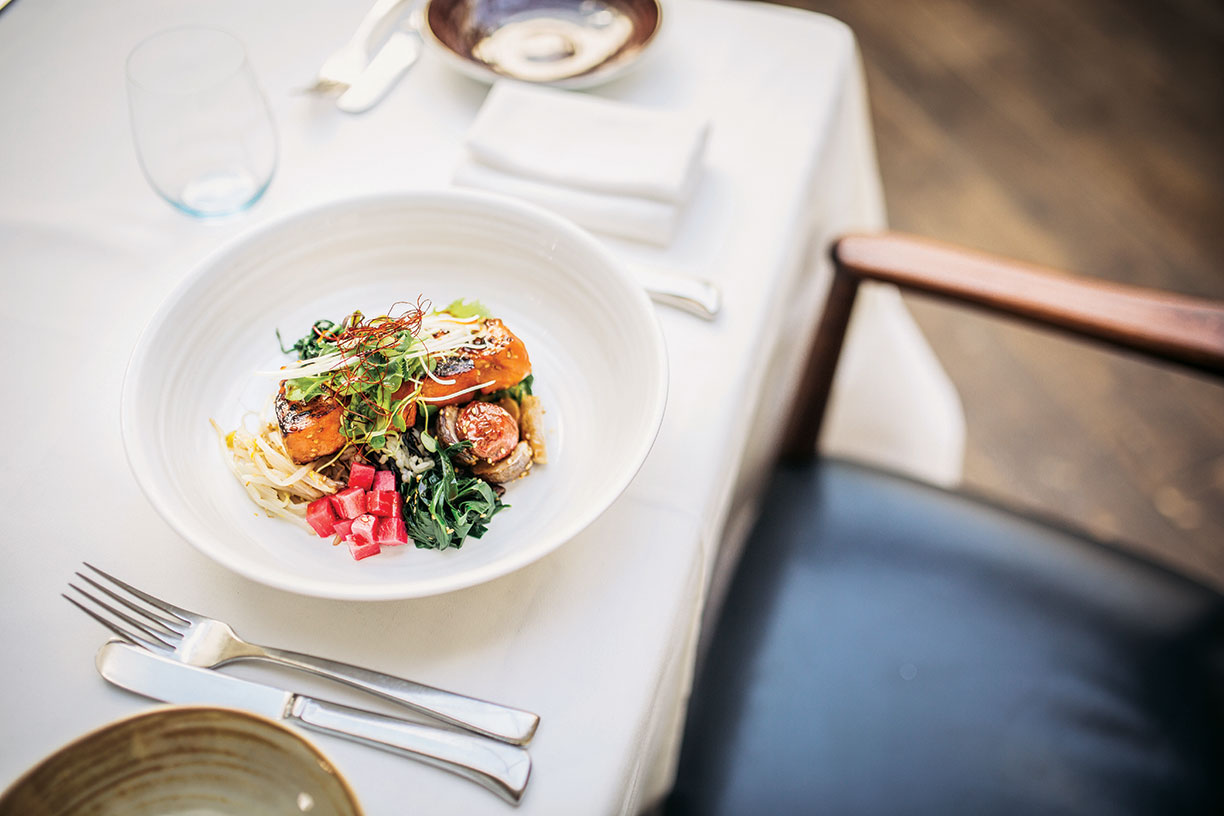
Photo courtesy Antonio Diaz
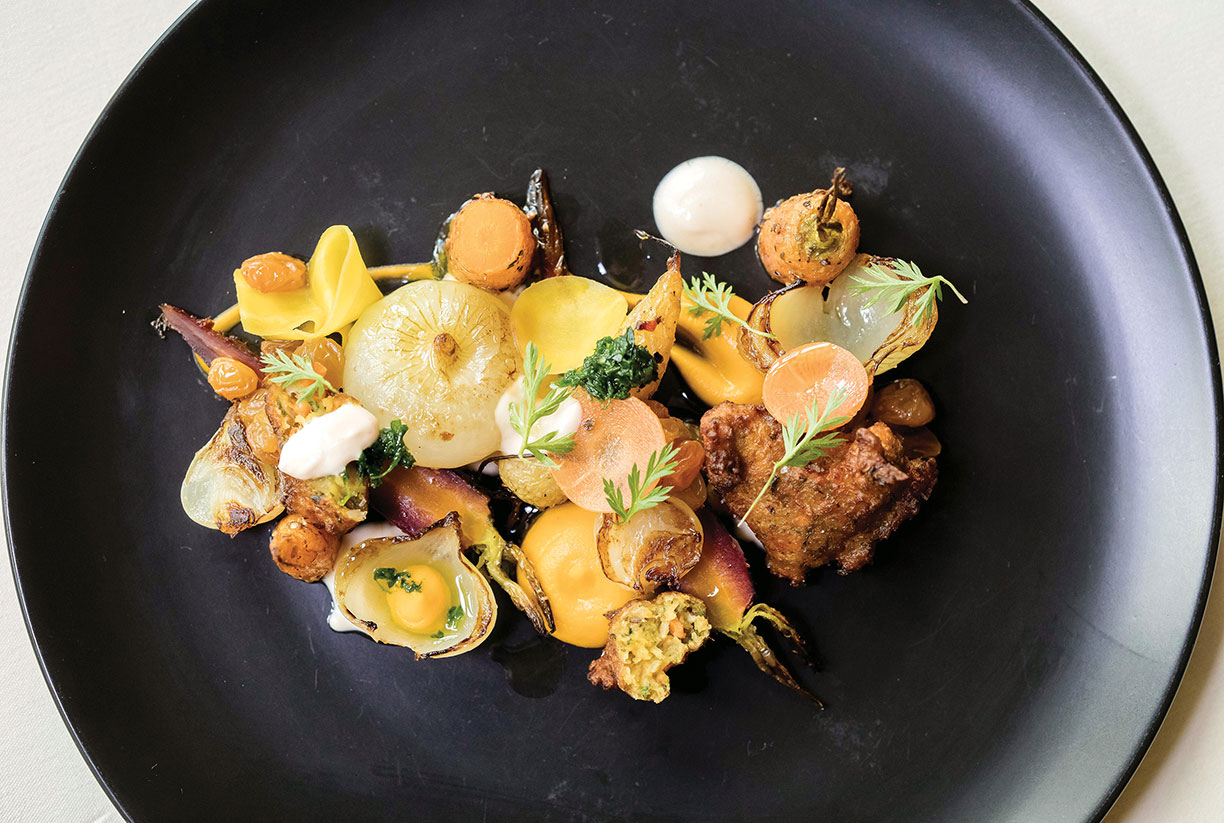
Photo courtesy Jason Knibb
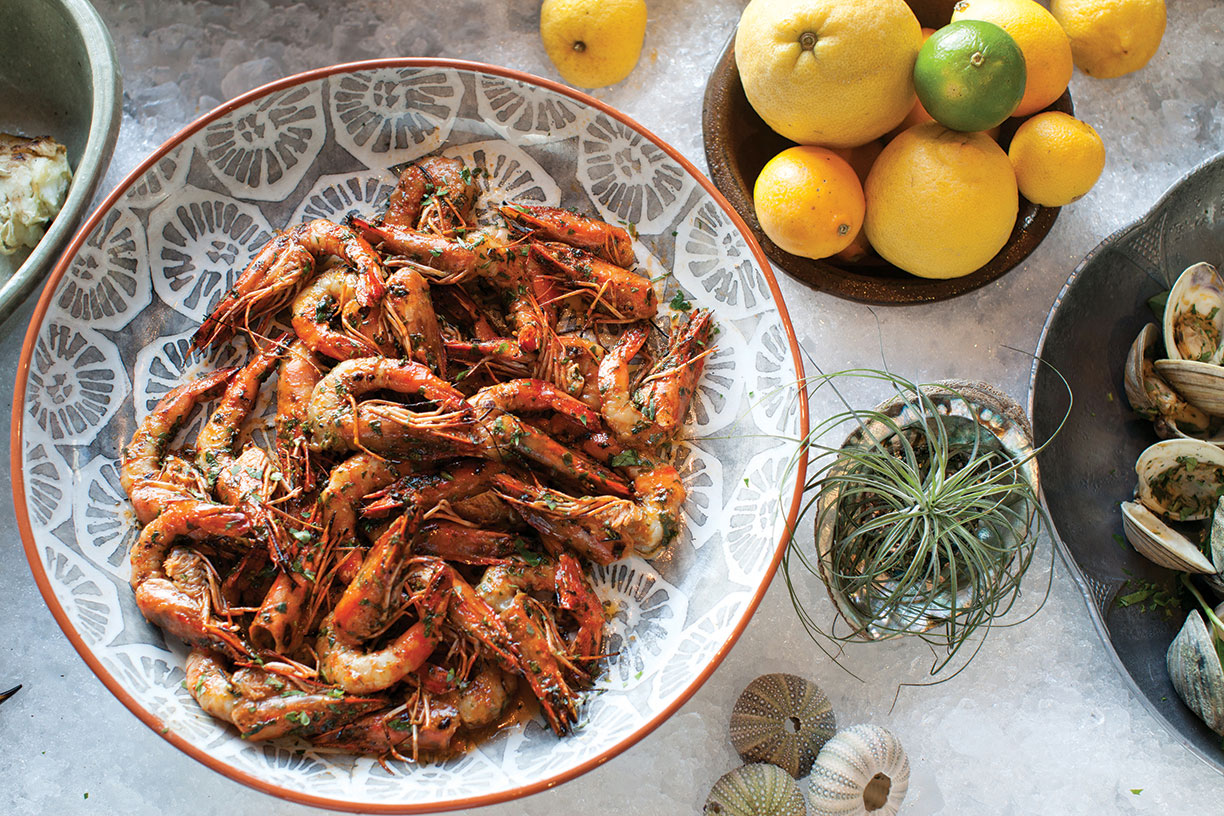
Photo courtesy Rick Poon
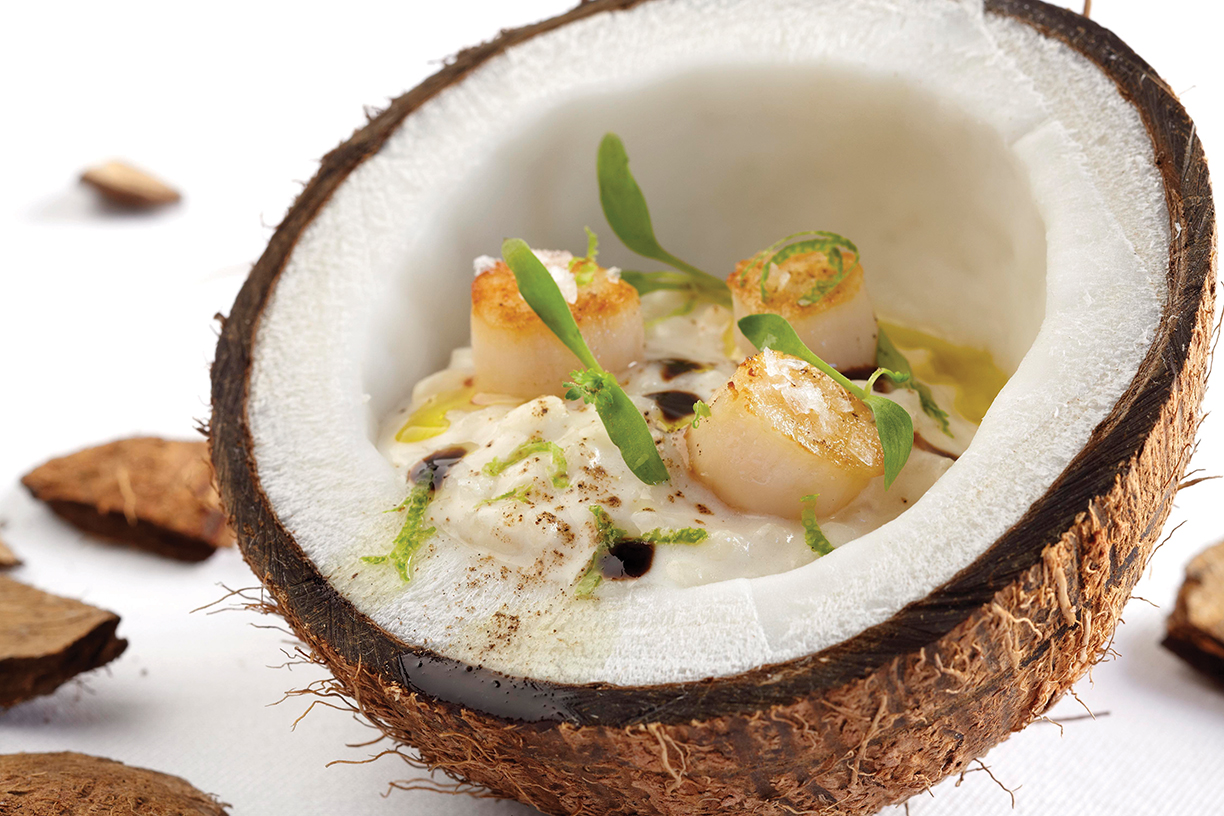
Photo courtesy Greg Powers Photography
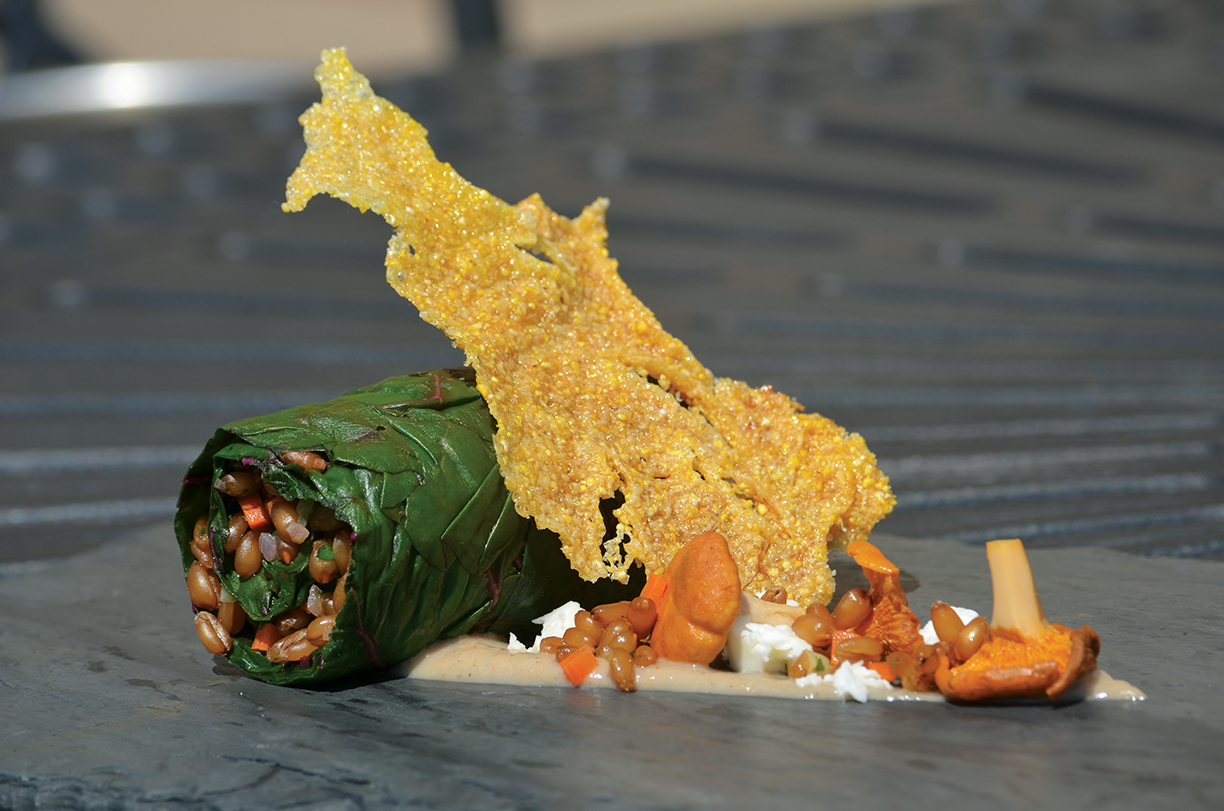
Photo courtesy Todd Kelly
Global Influences
Annisa, New York; www.annisarestaurant.com
The Bazaar by José Andrés, Los Angeles; www.sbe.com
The Bazaar by José Andrés South Beach; www.sbe.com
Cassia, Santa Monica; www.cassiala.com
Orchids at the Palm Court, Cincinnati; www.orchidsatpalmcourt.com
Nine-Ten Restaurant & Bar, San Diego; www.nine-ten.com
Spago, Beverly Hills; www.wolfgangpuck.com
Topolobambpo, Chicago; www.rickbayless.com
Zahav, Philadelphia; www.zahavrestaurant.com














